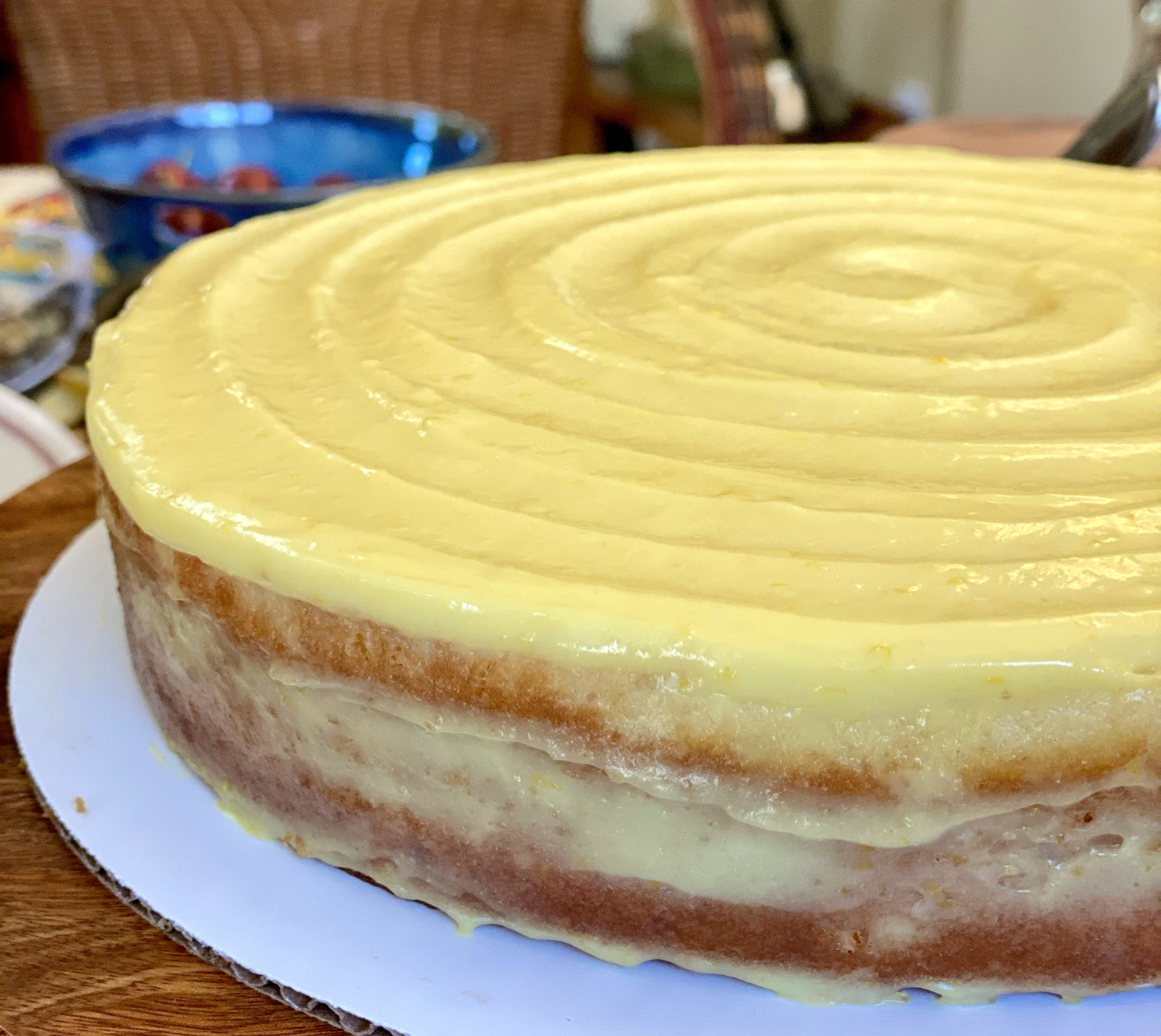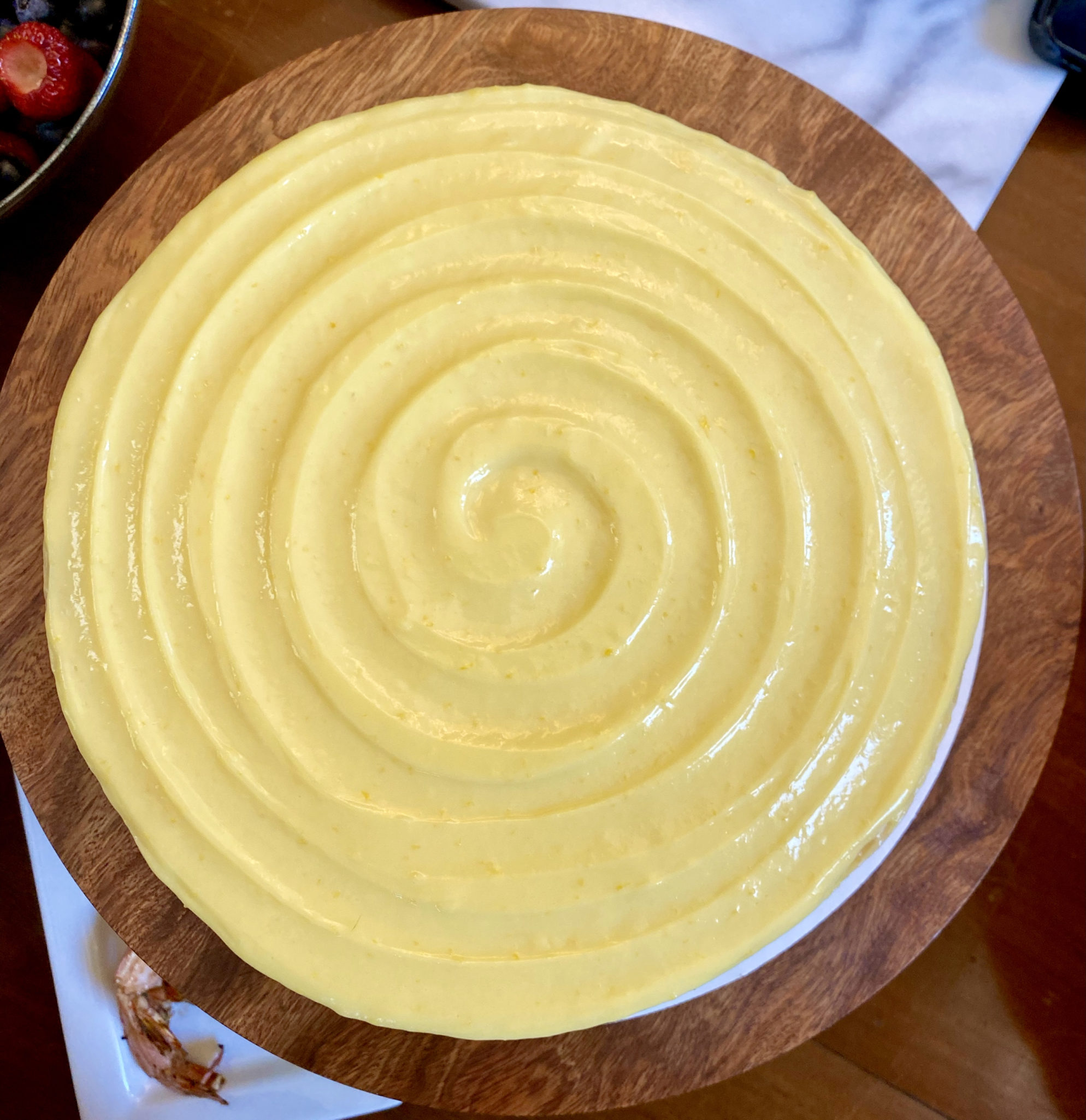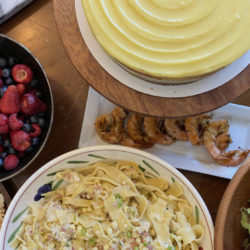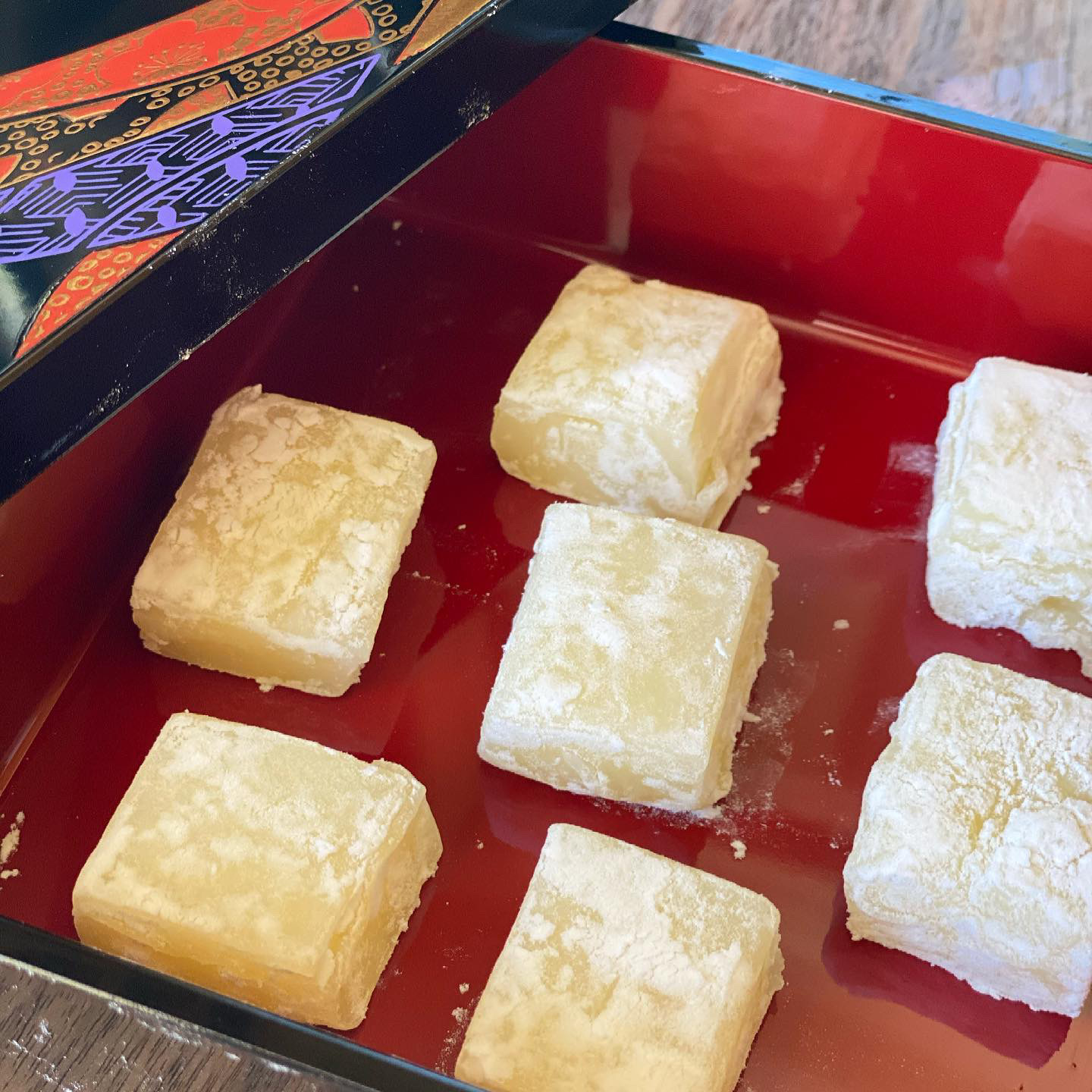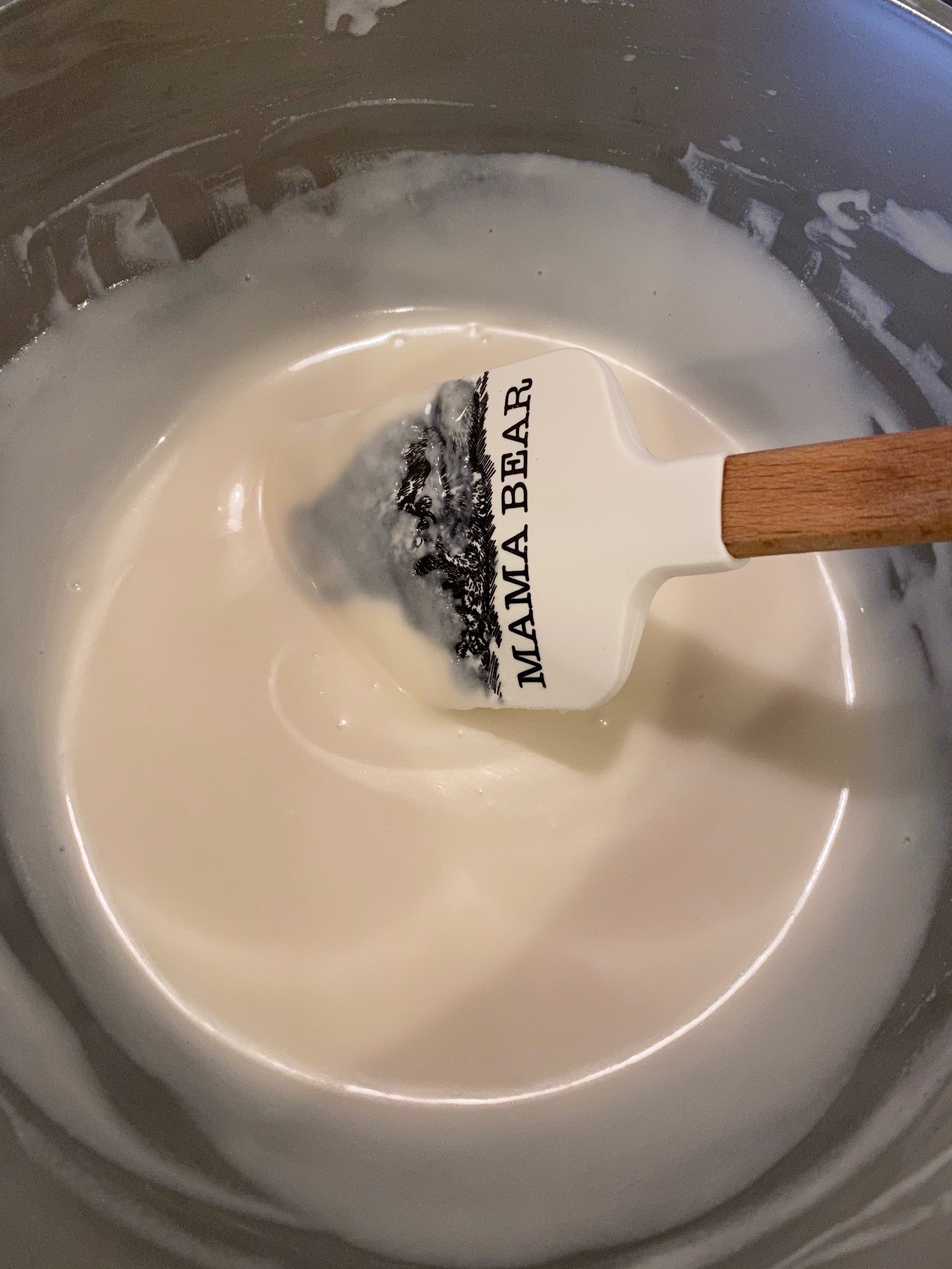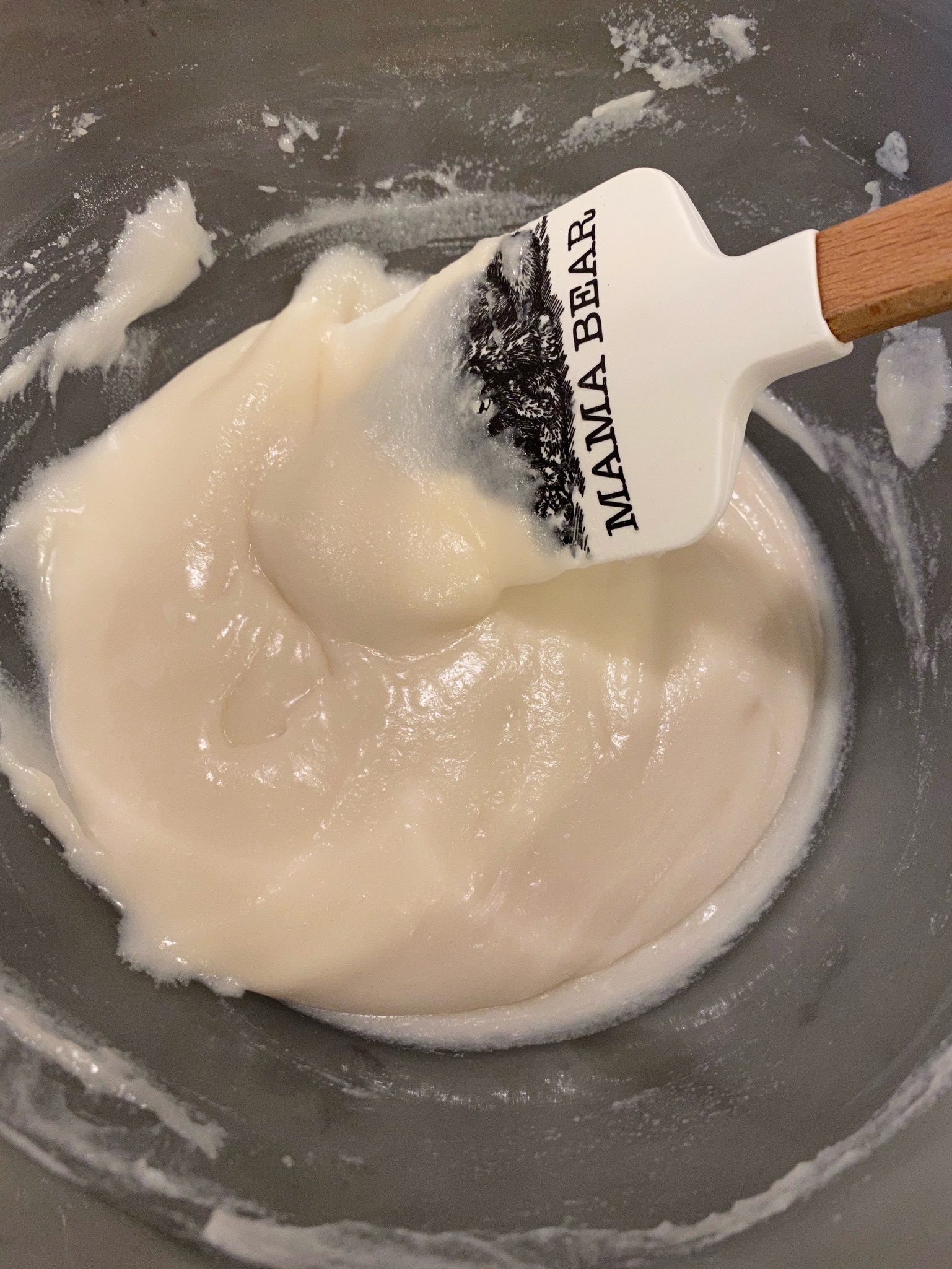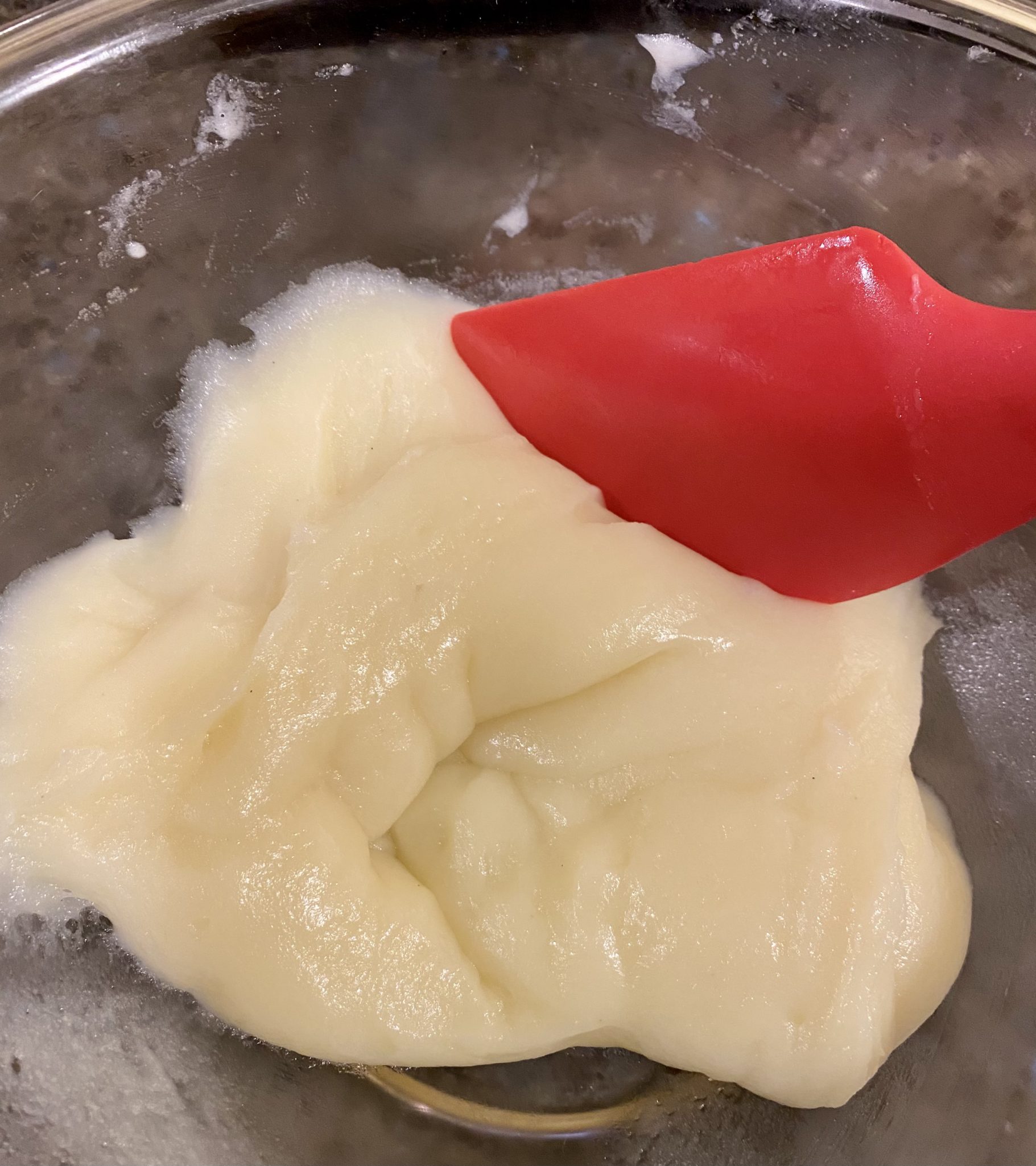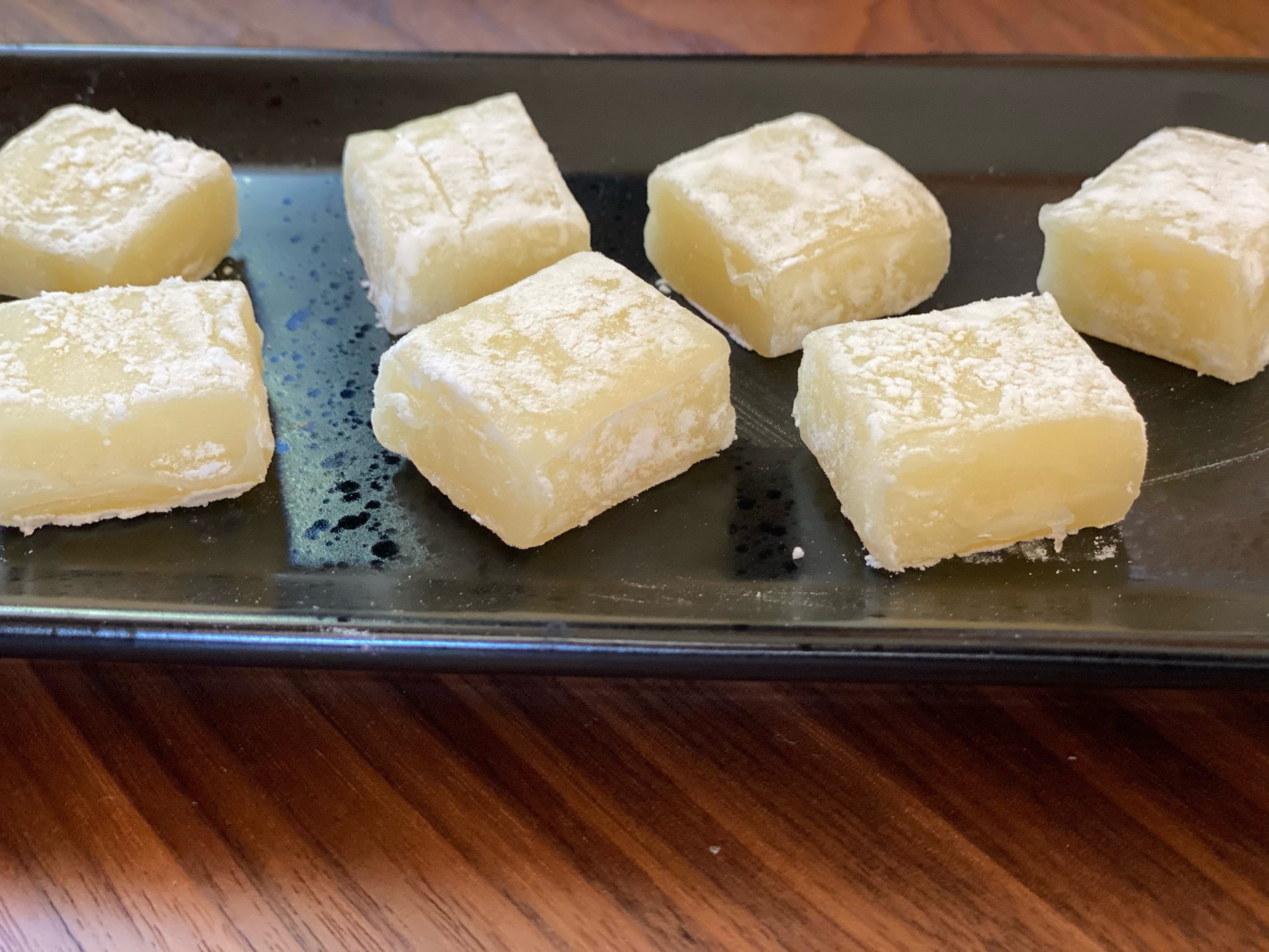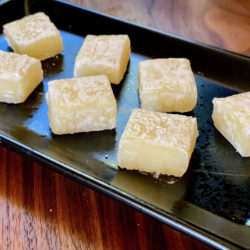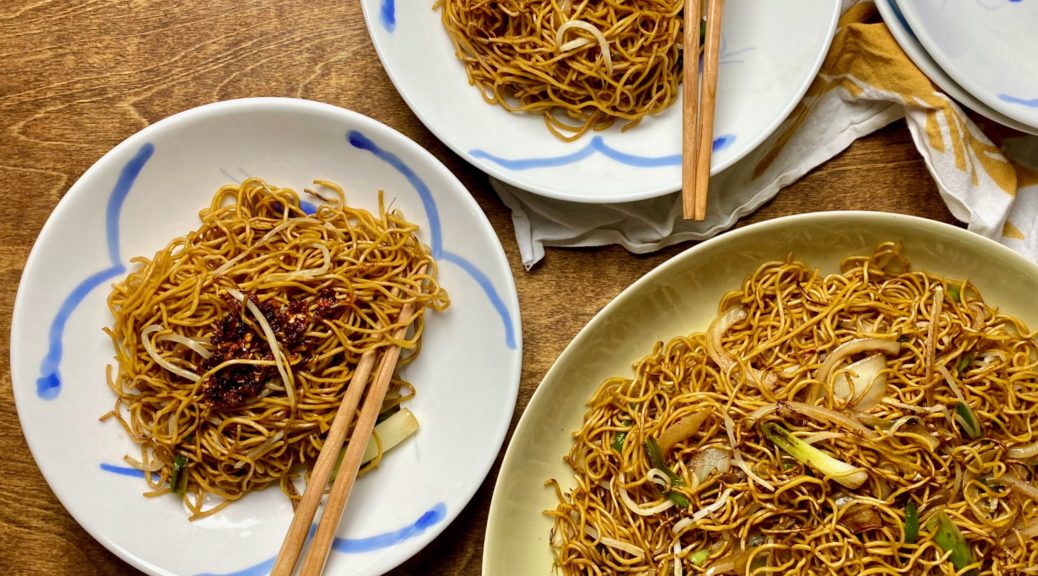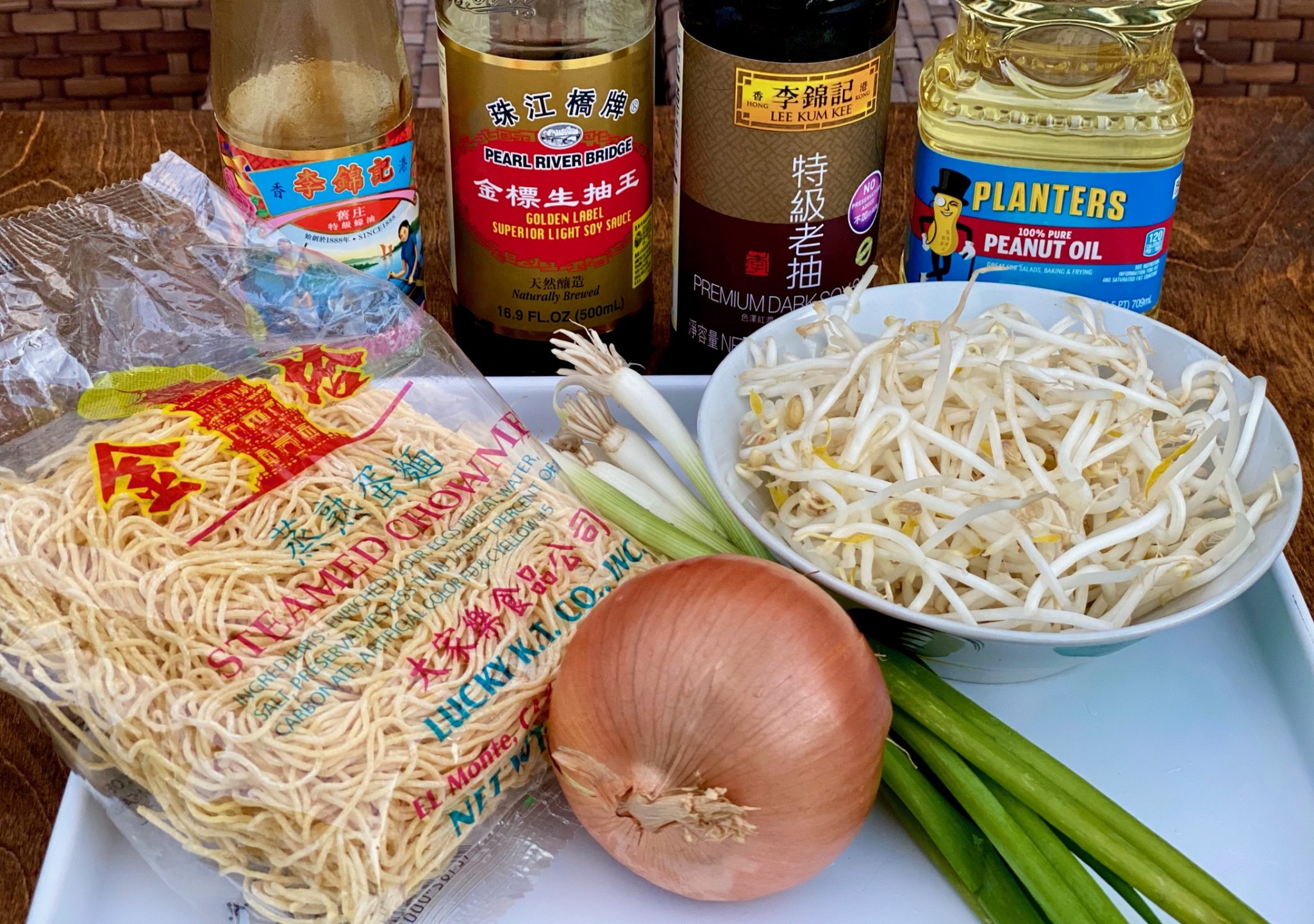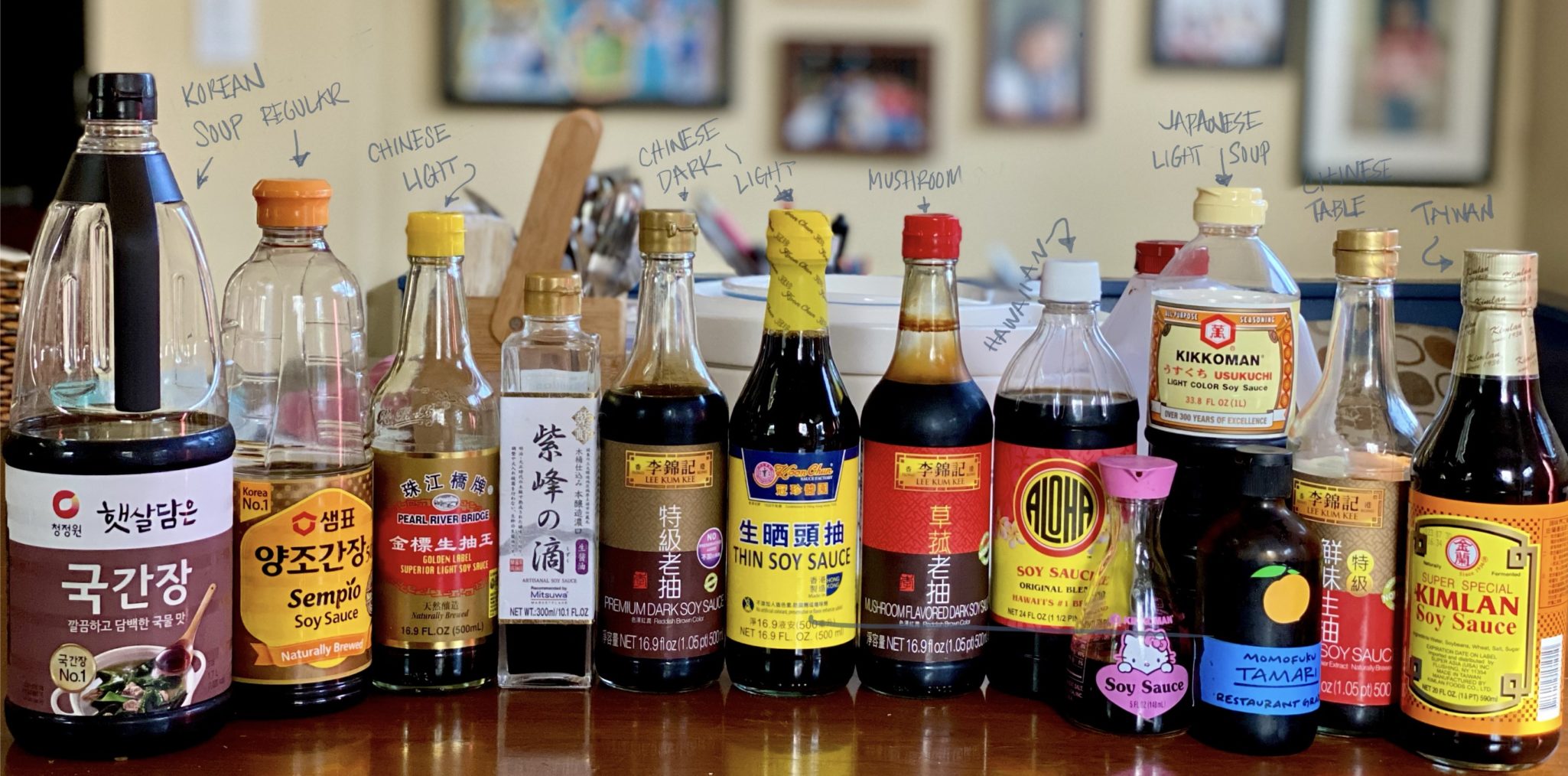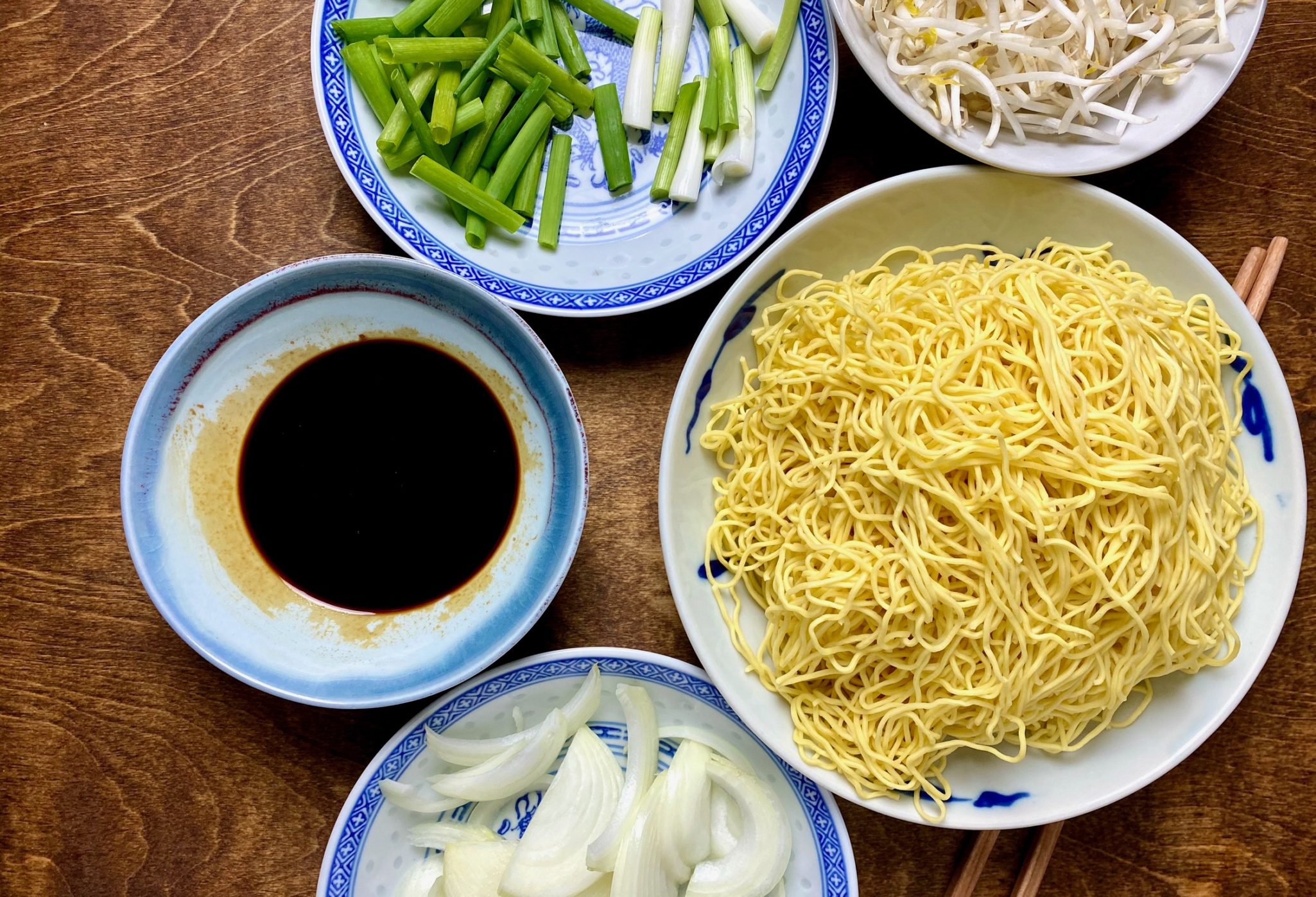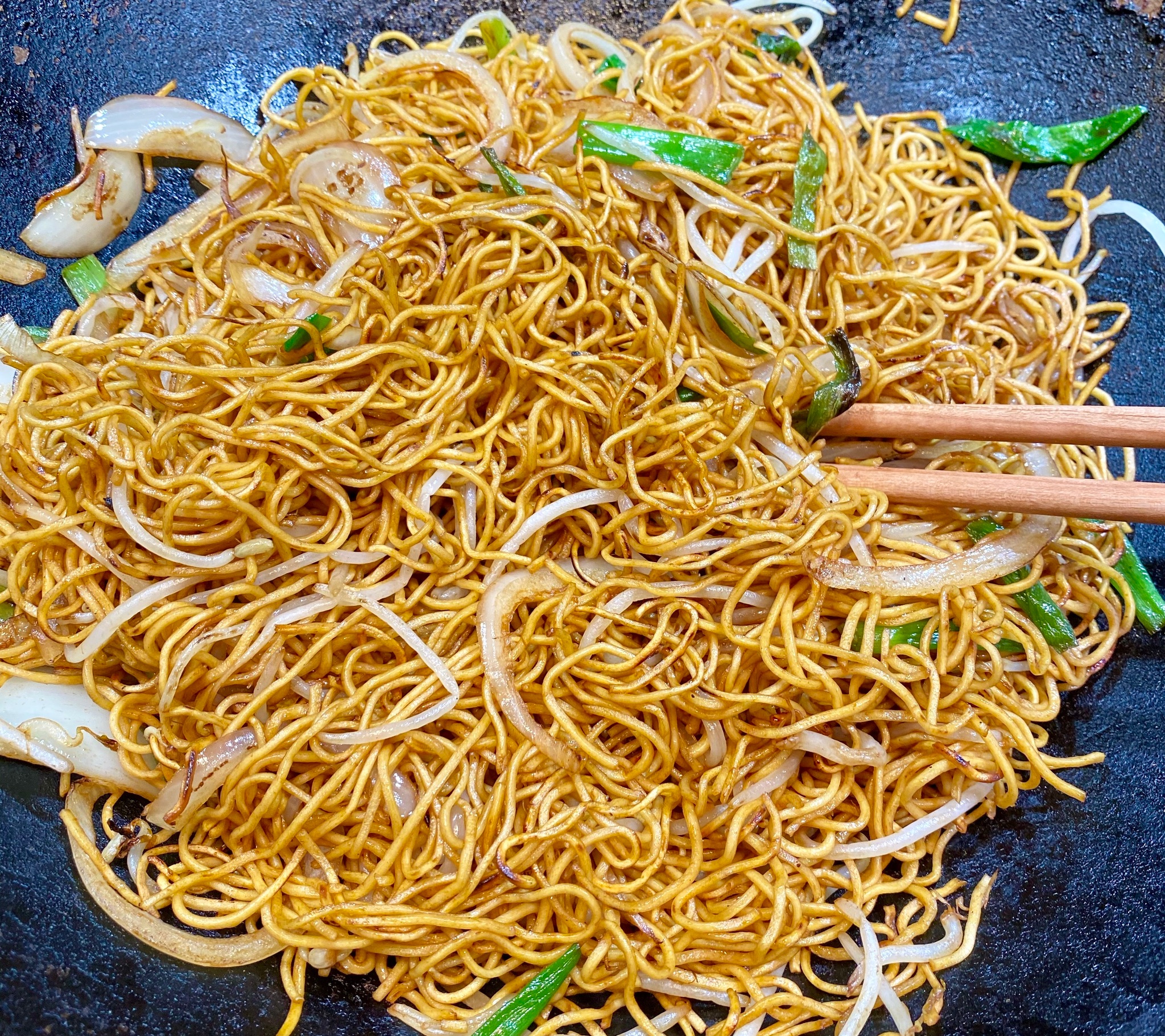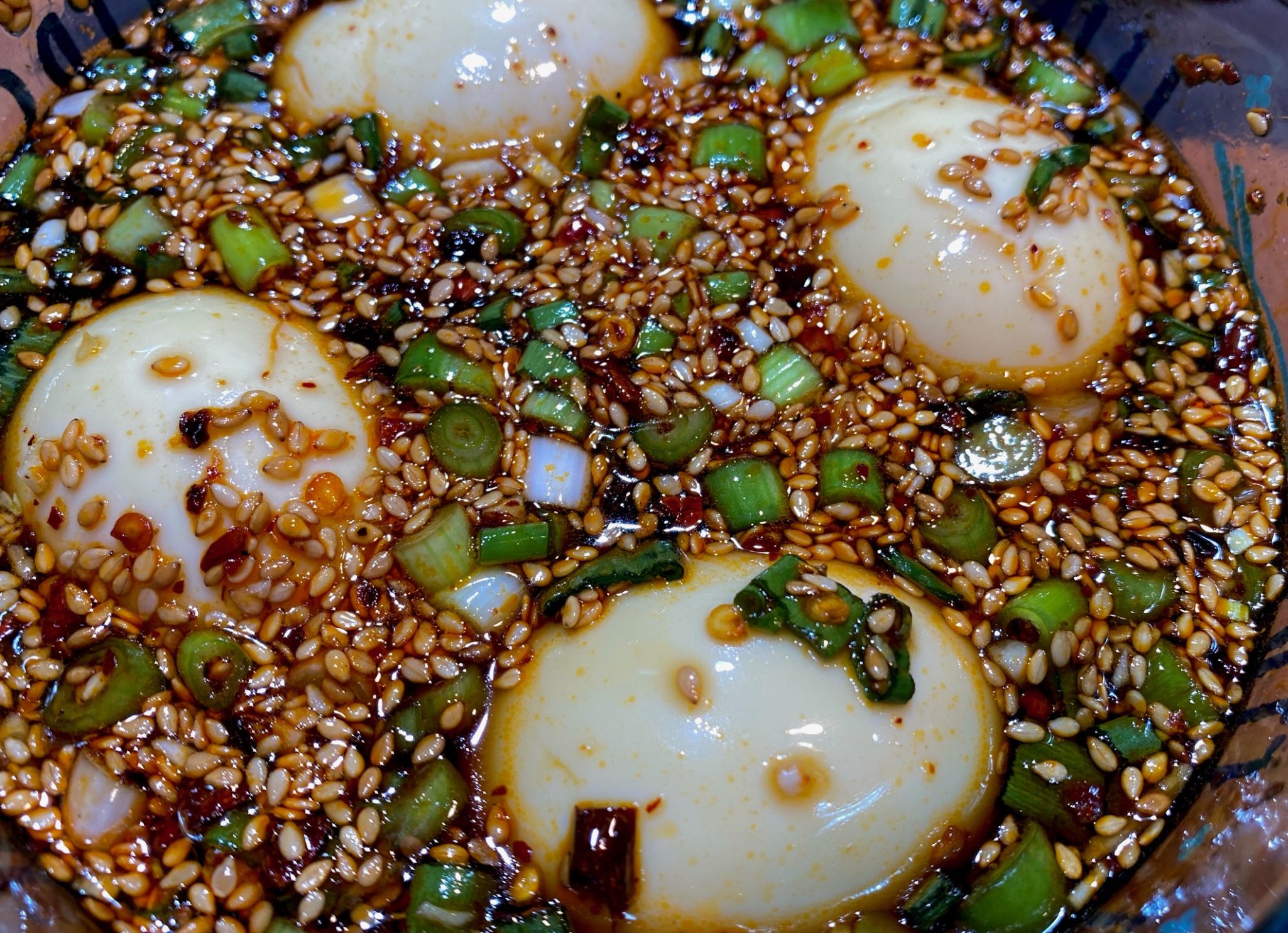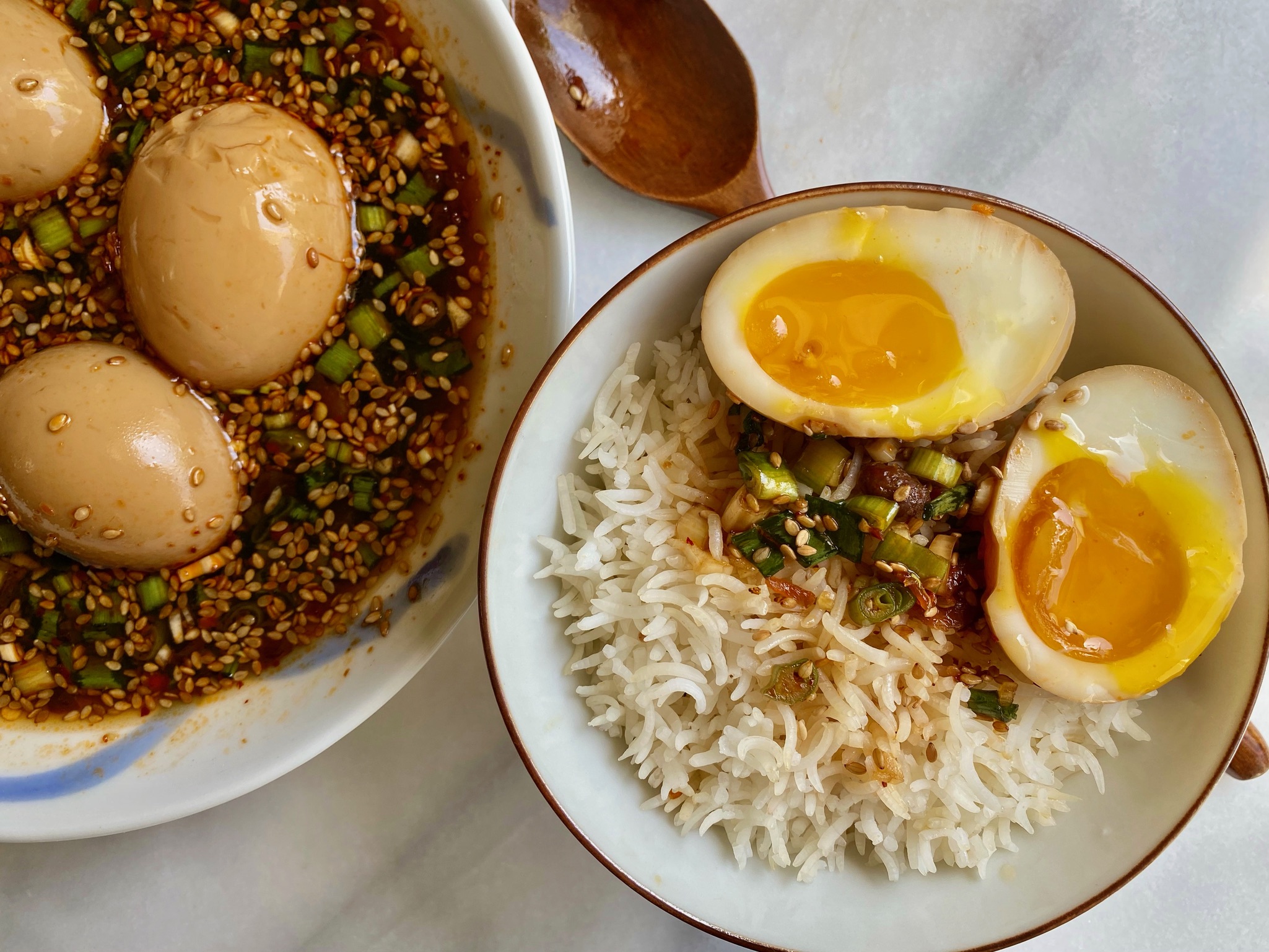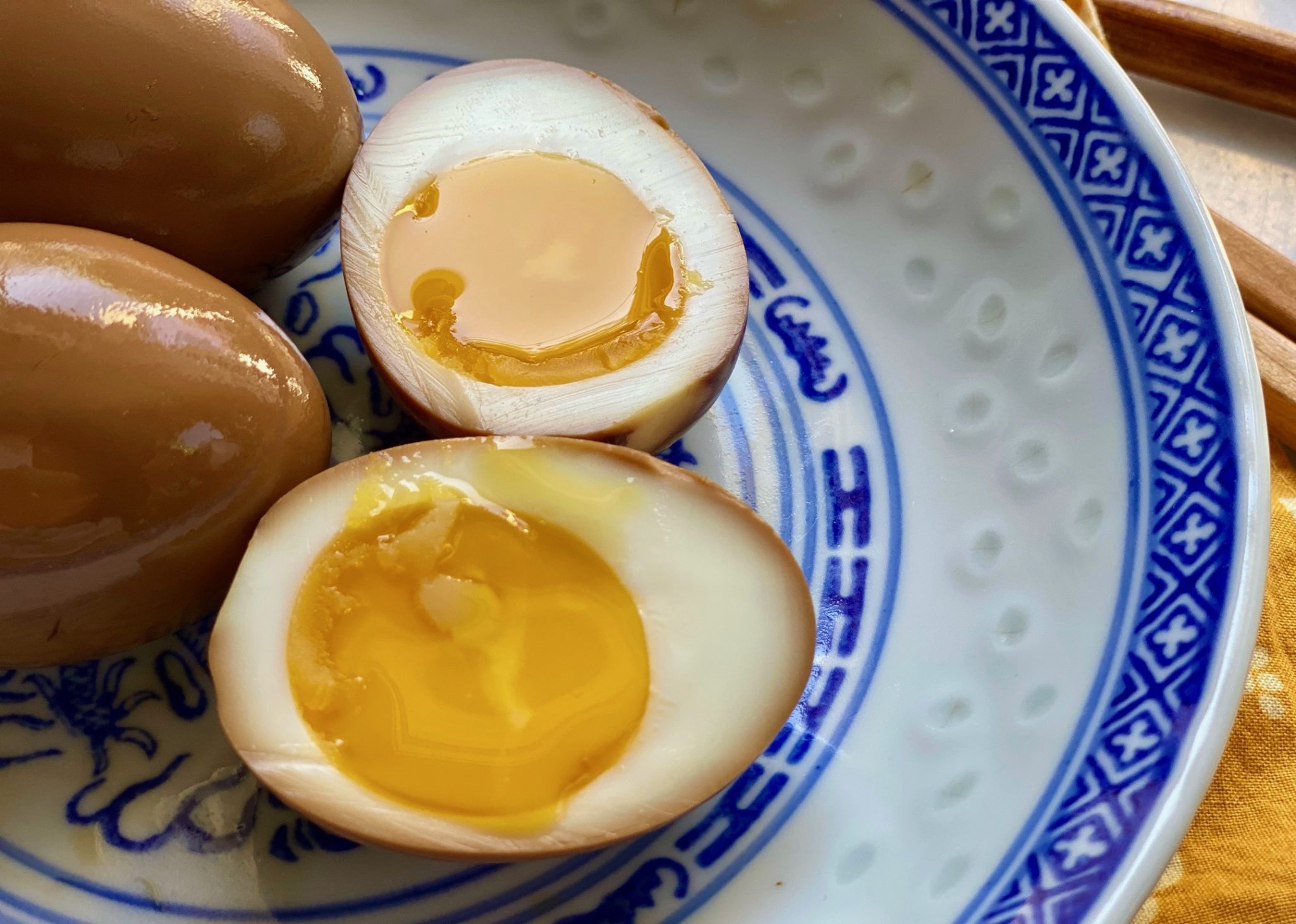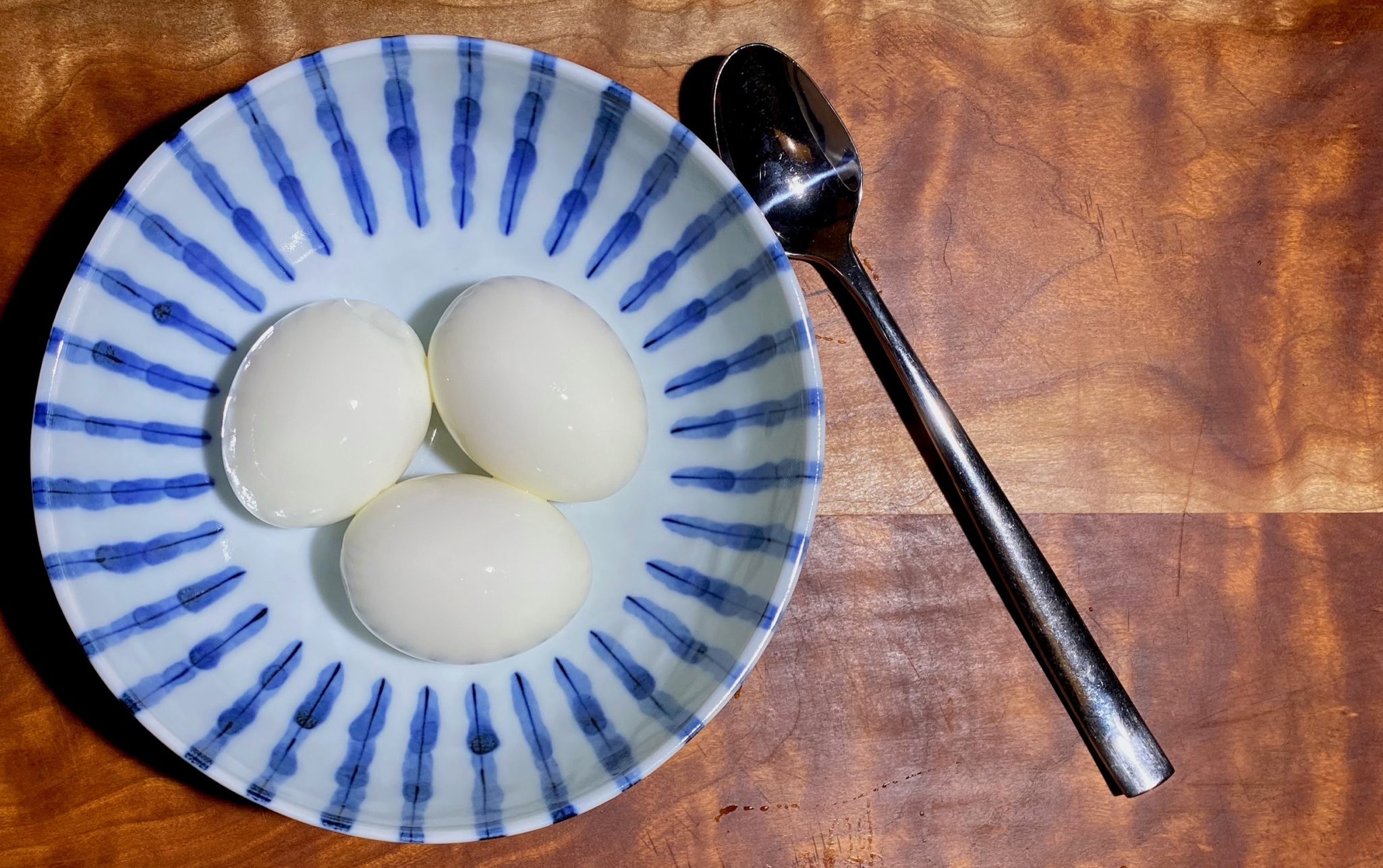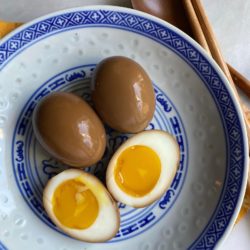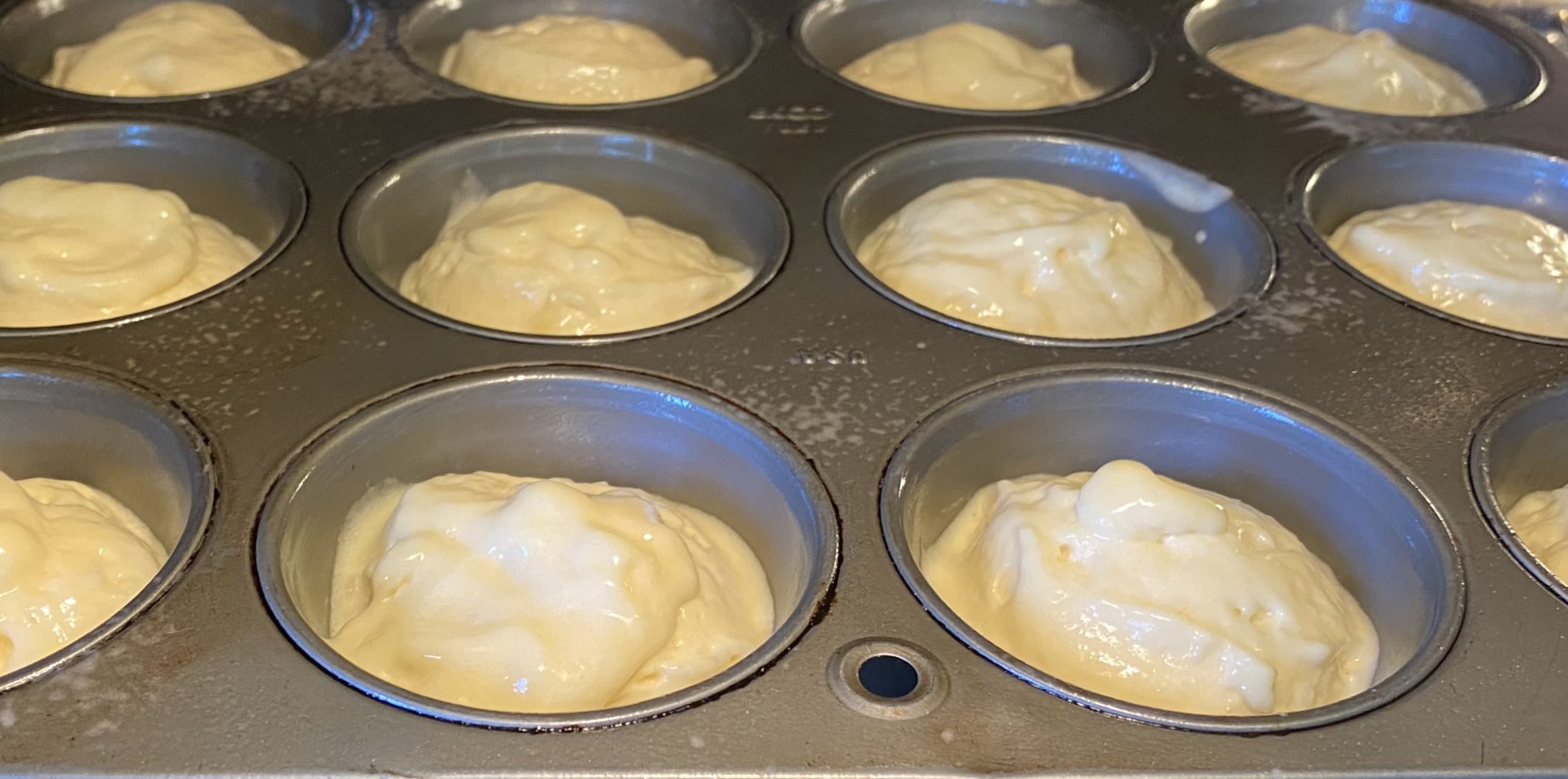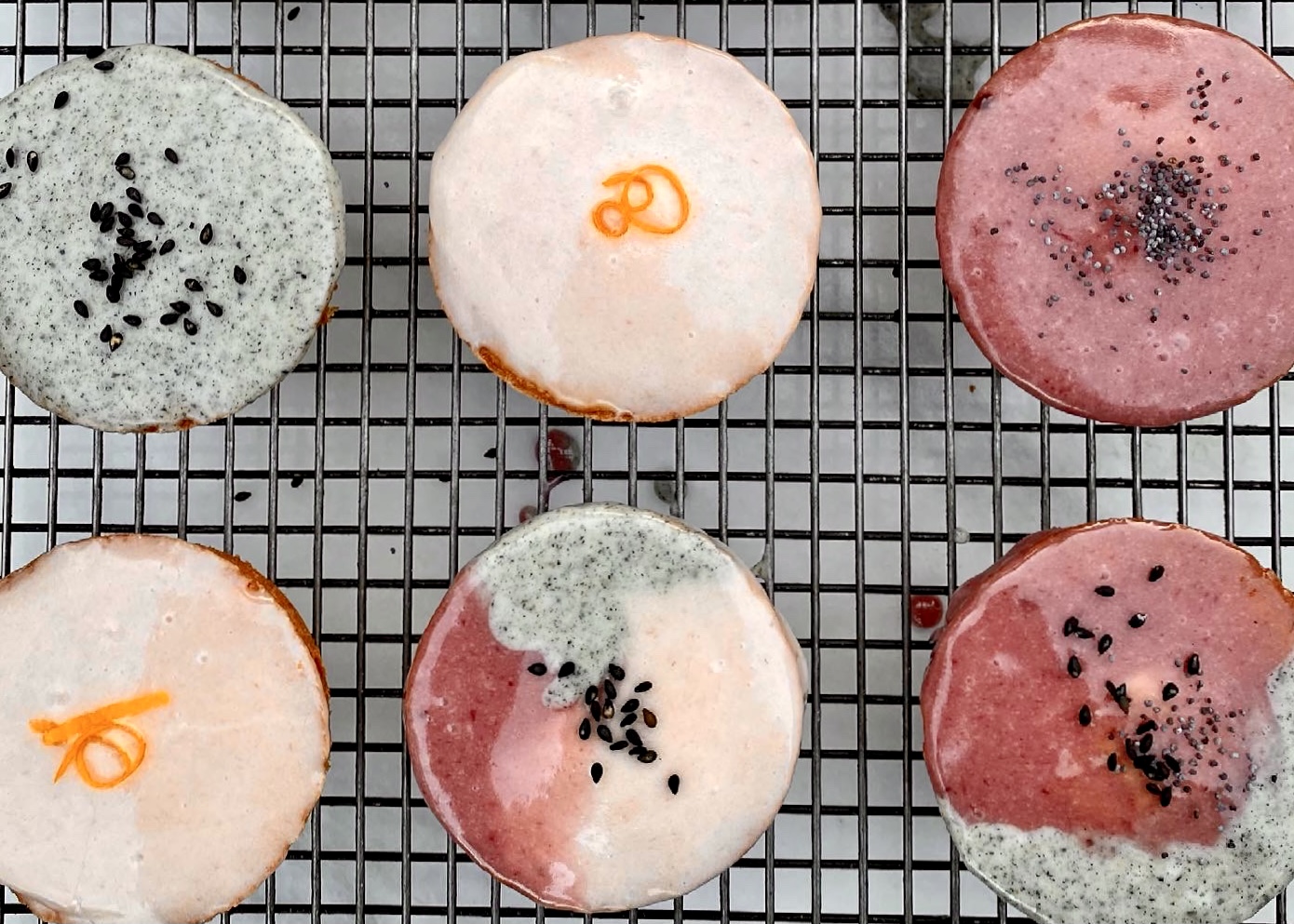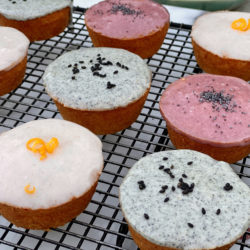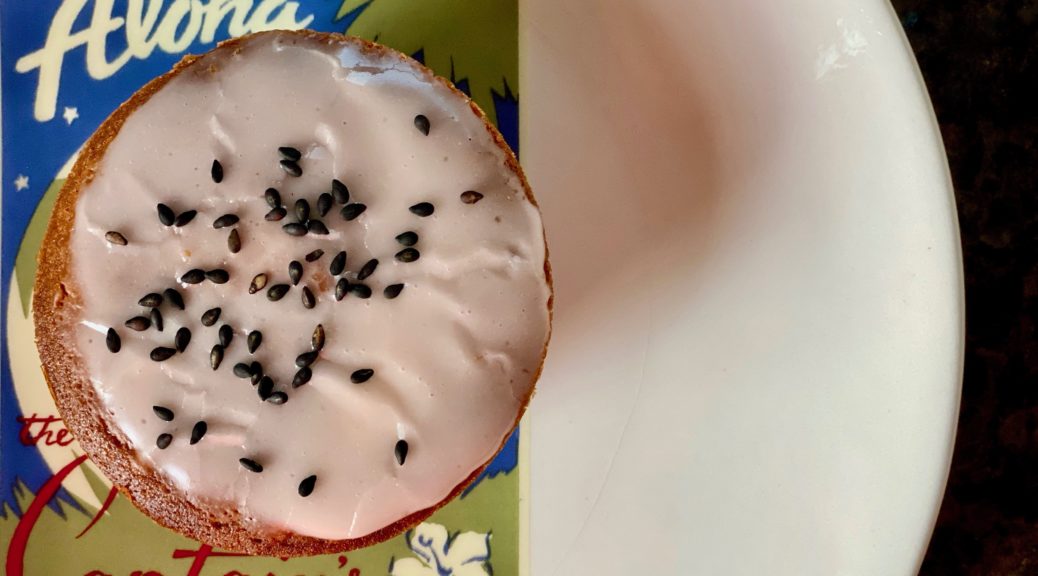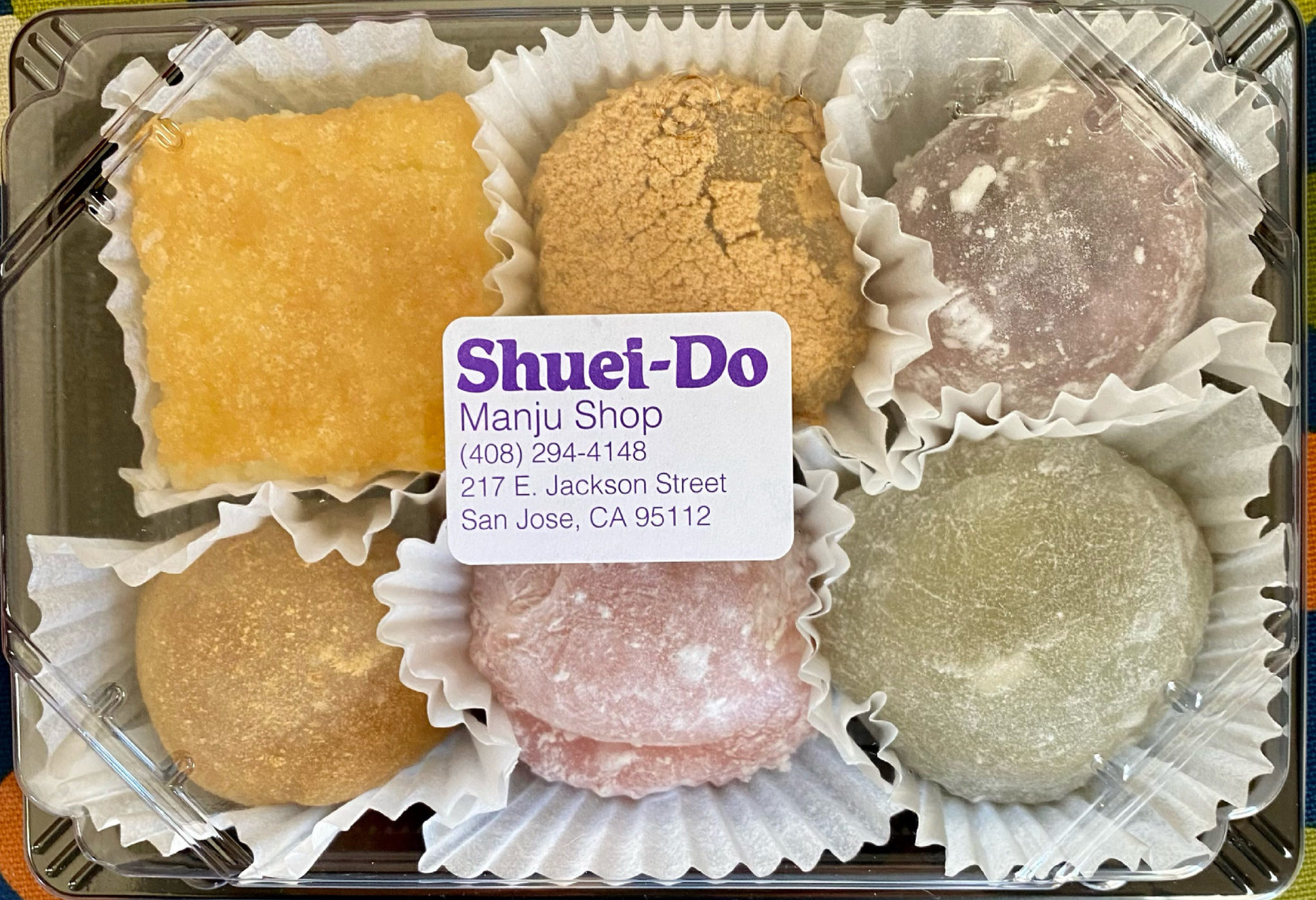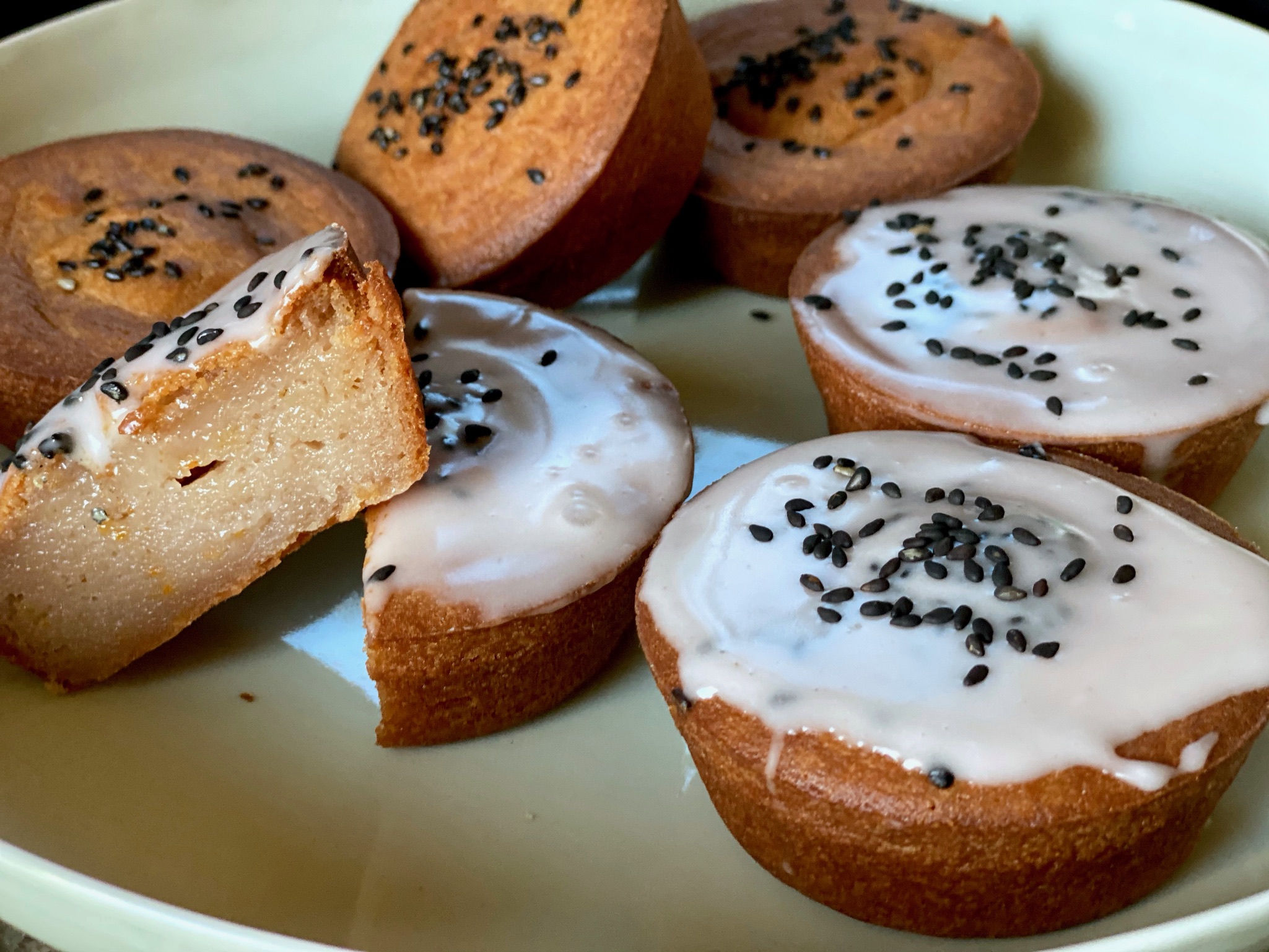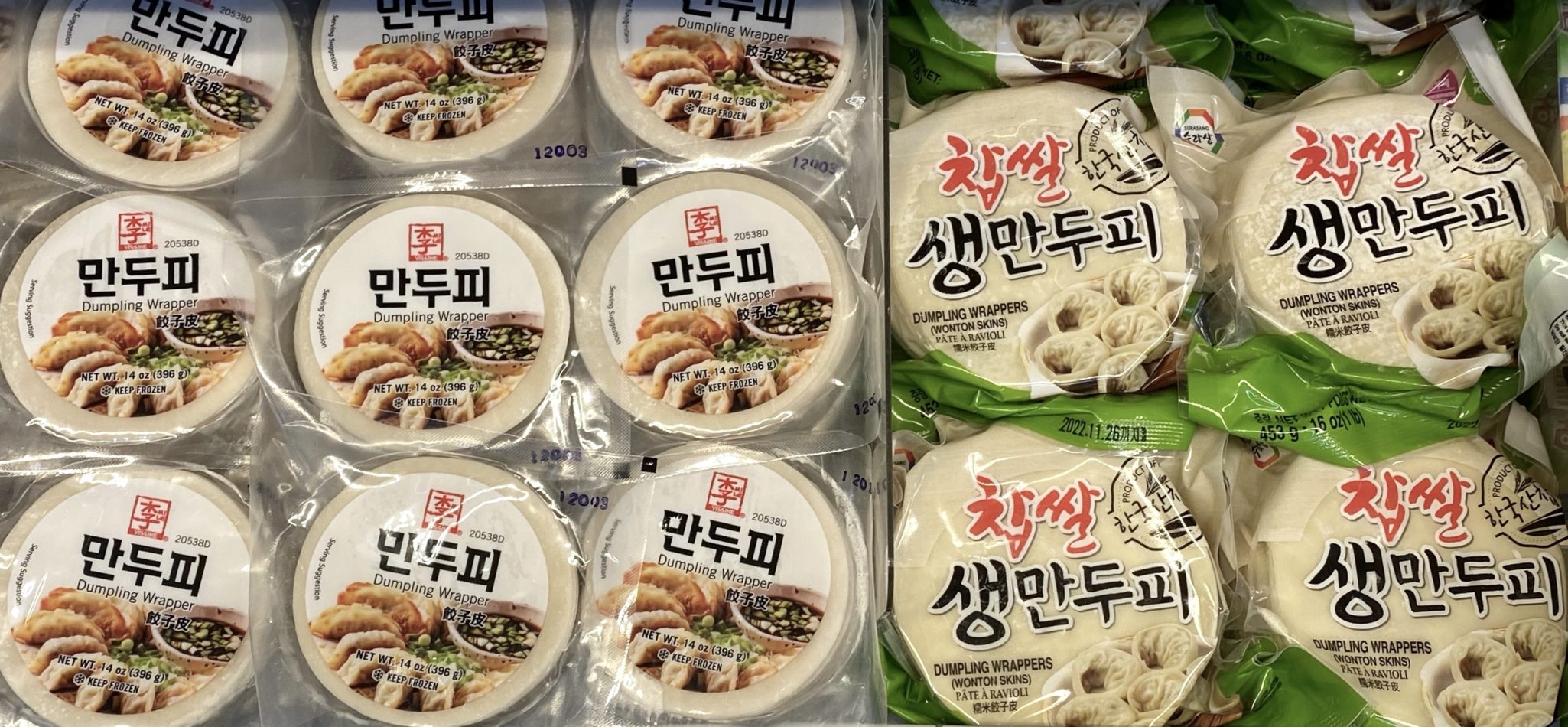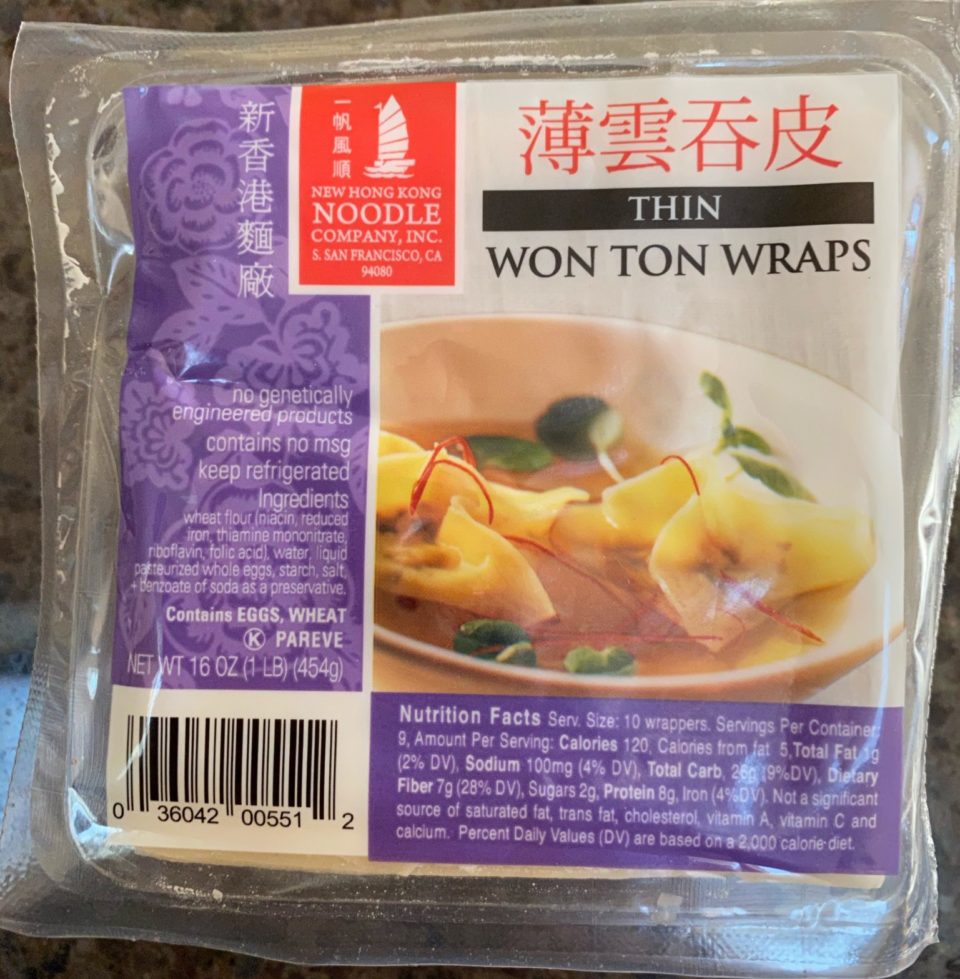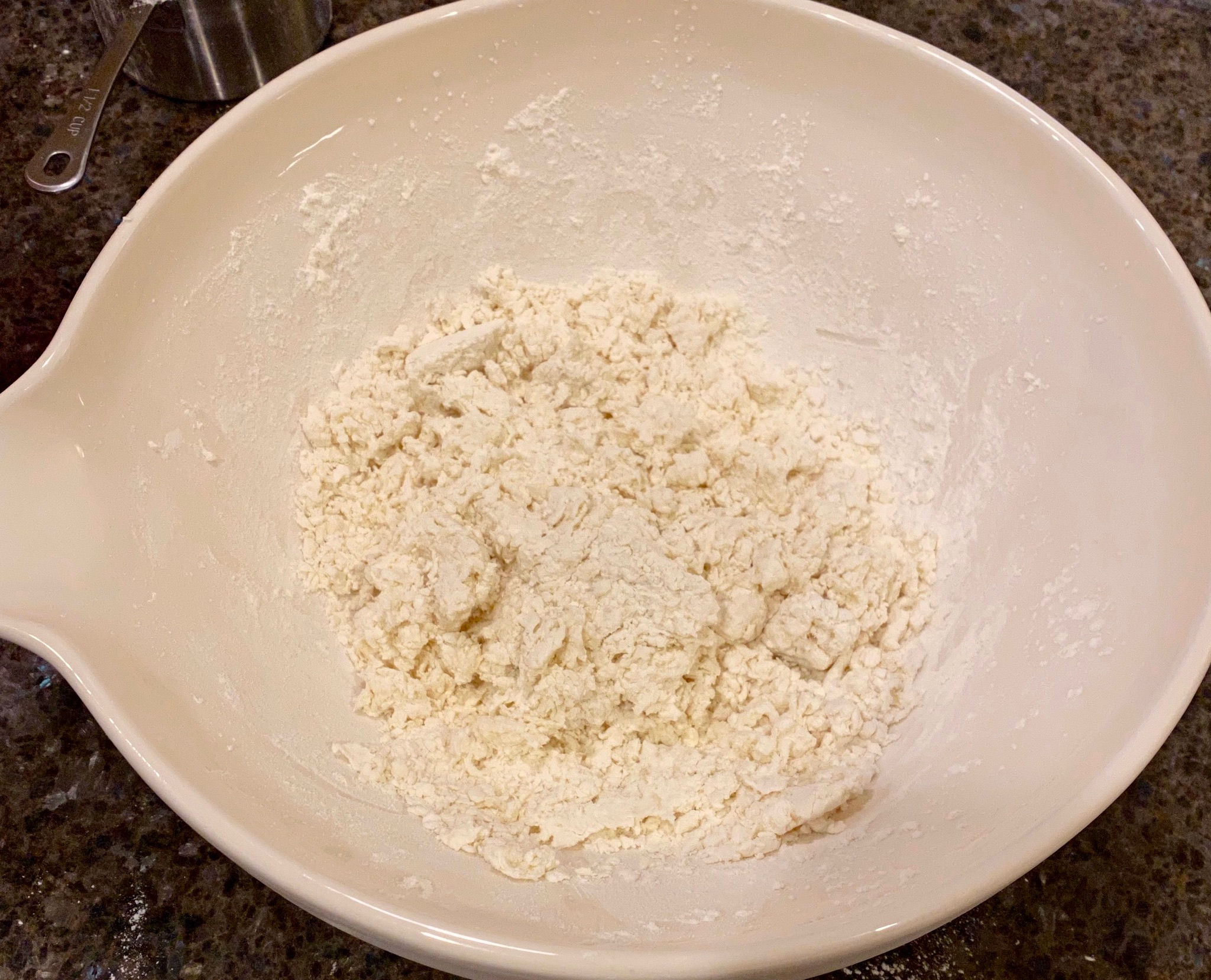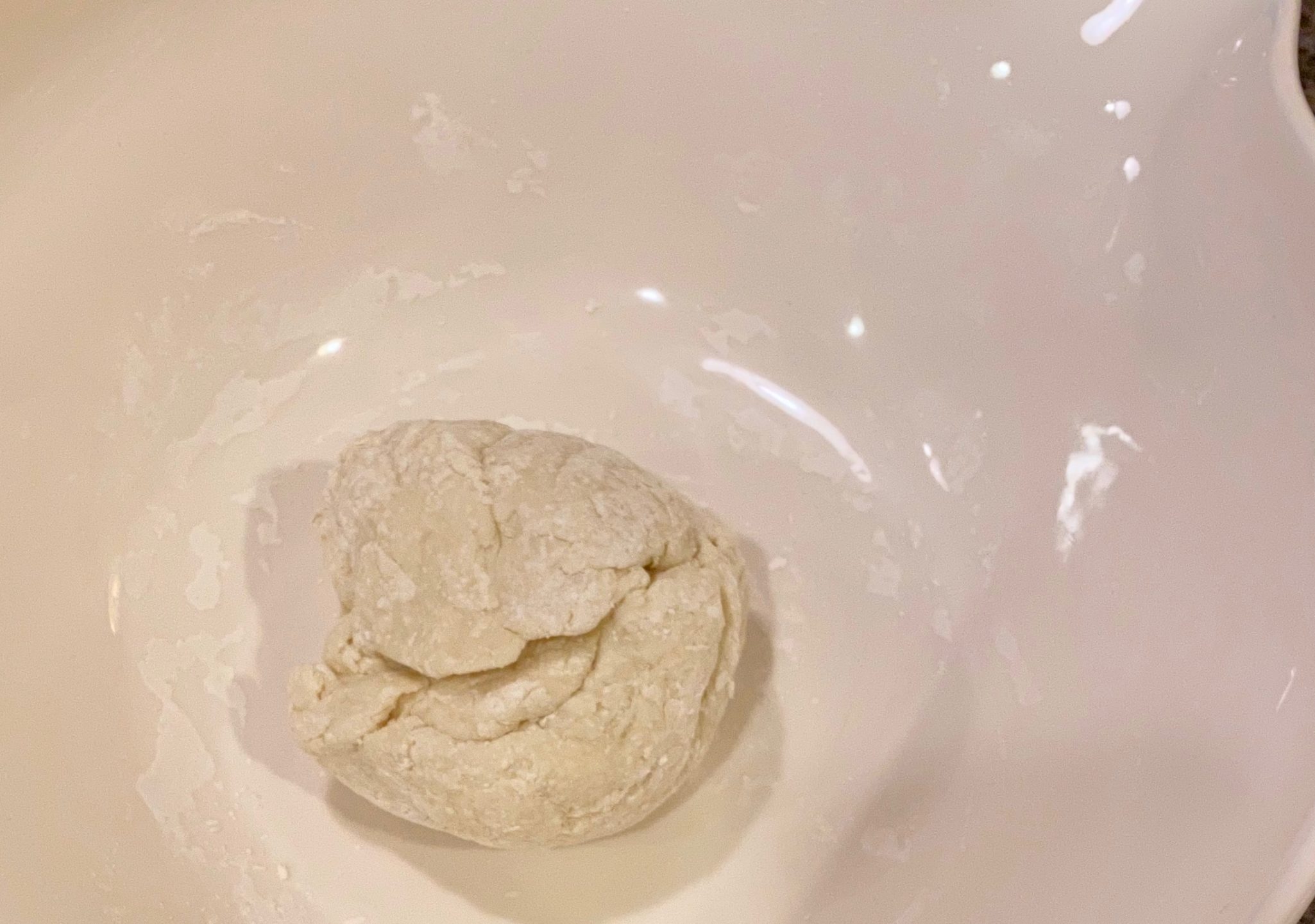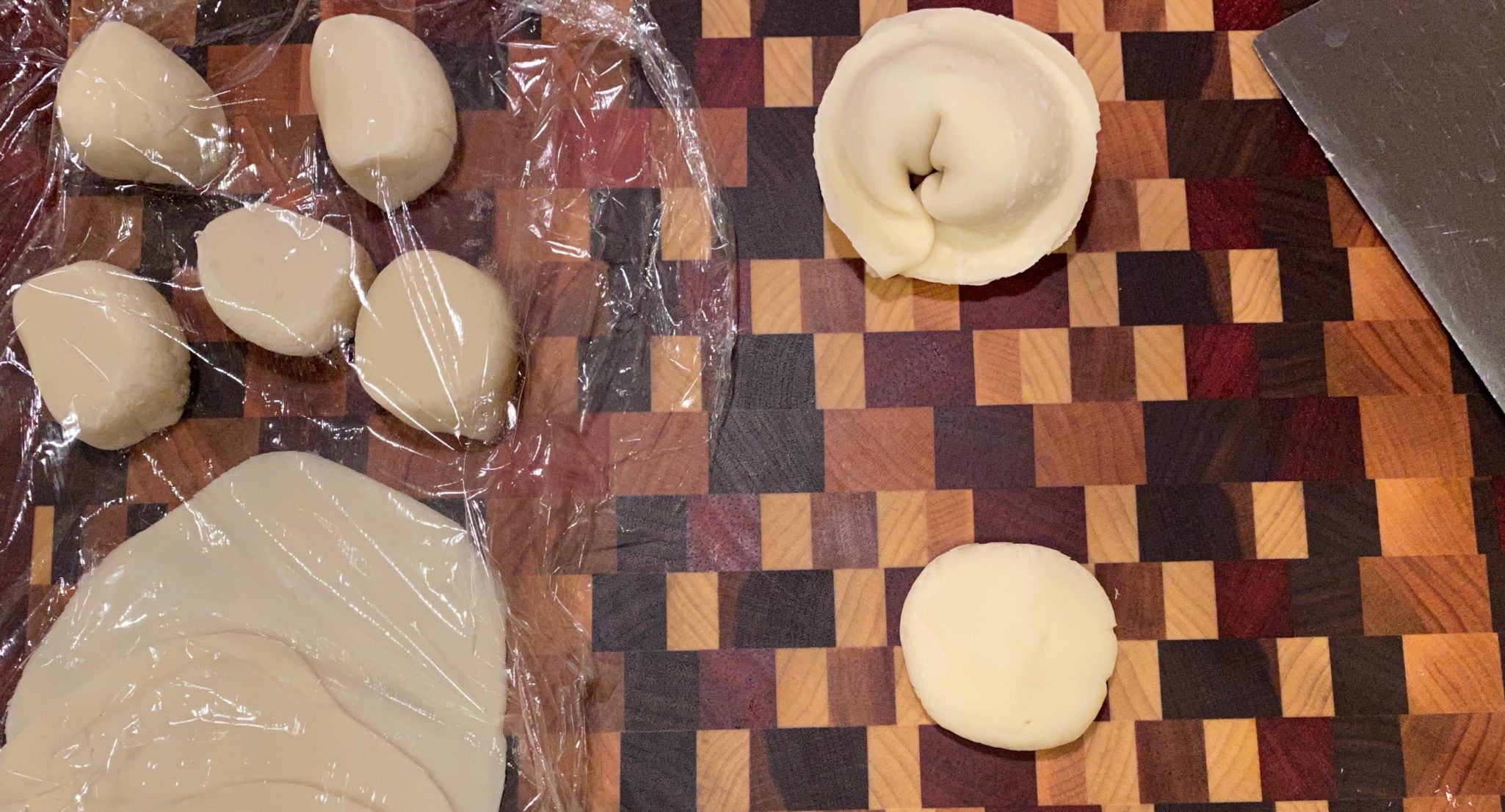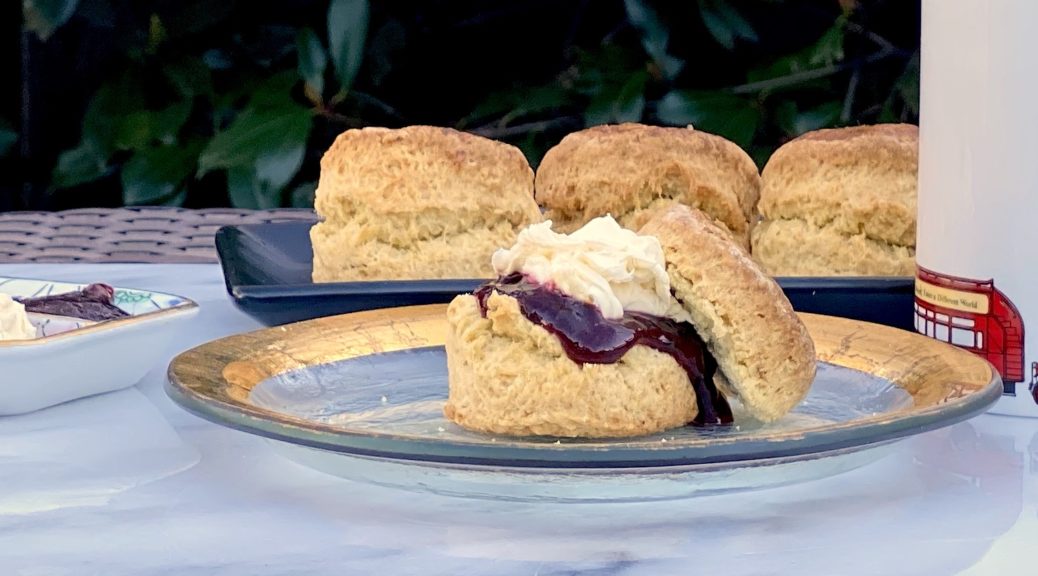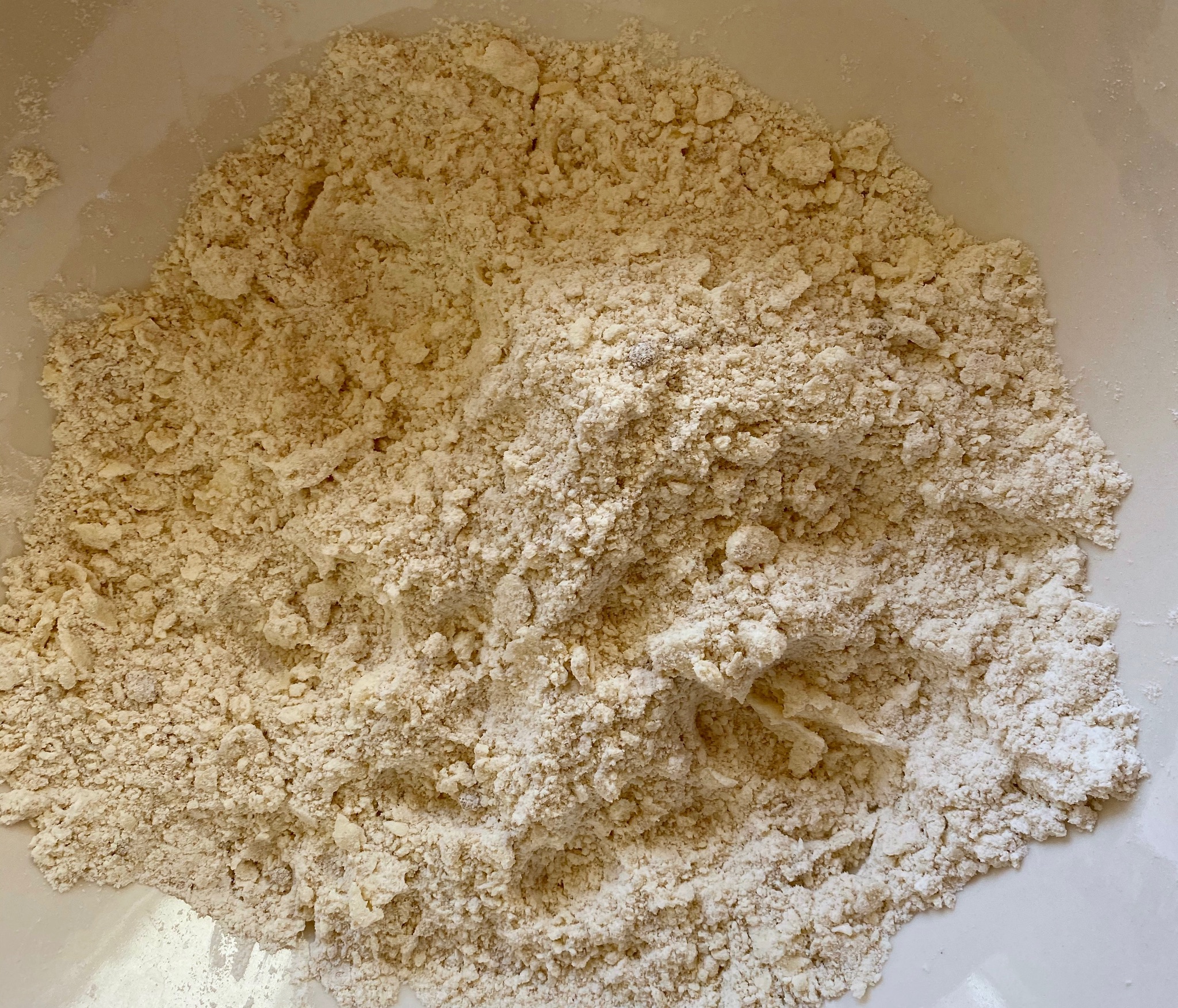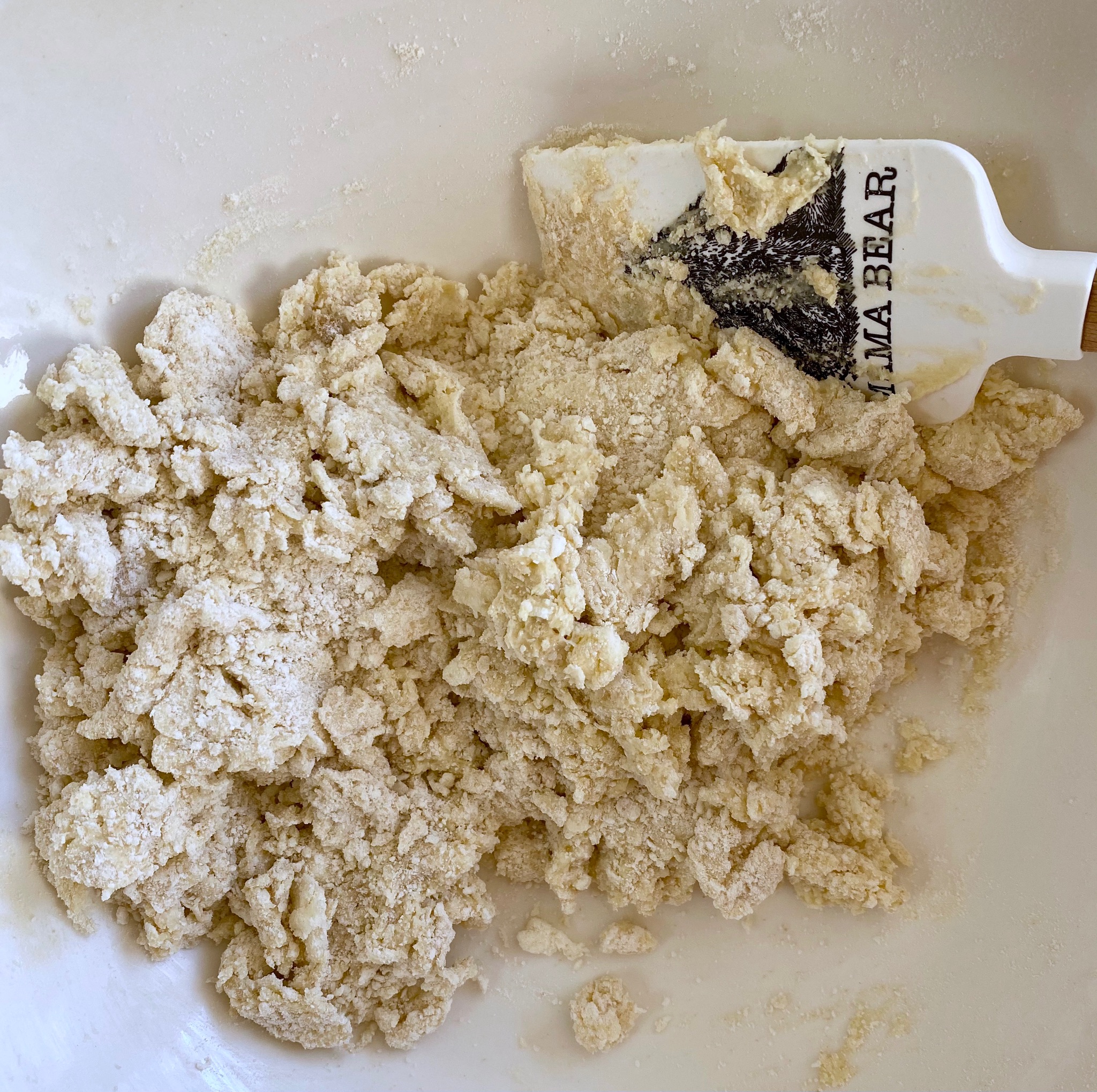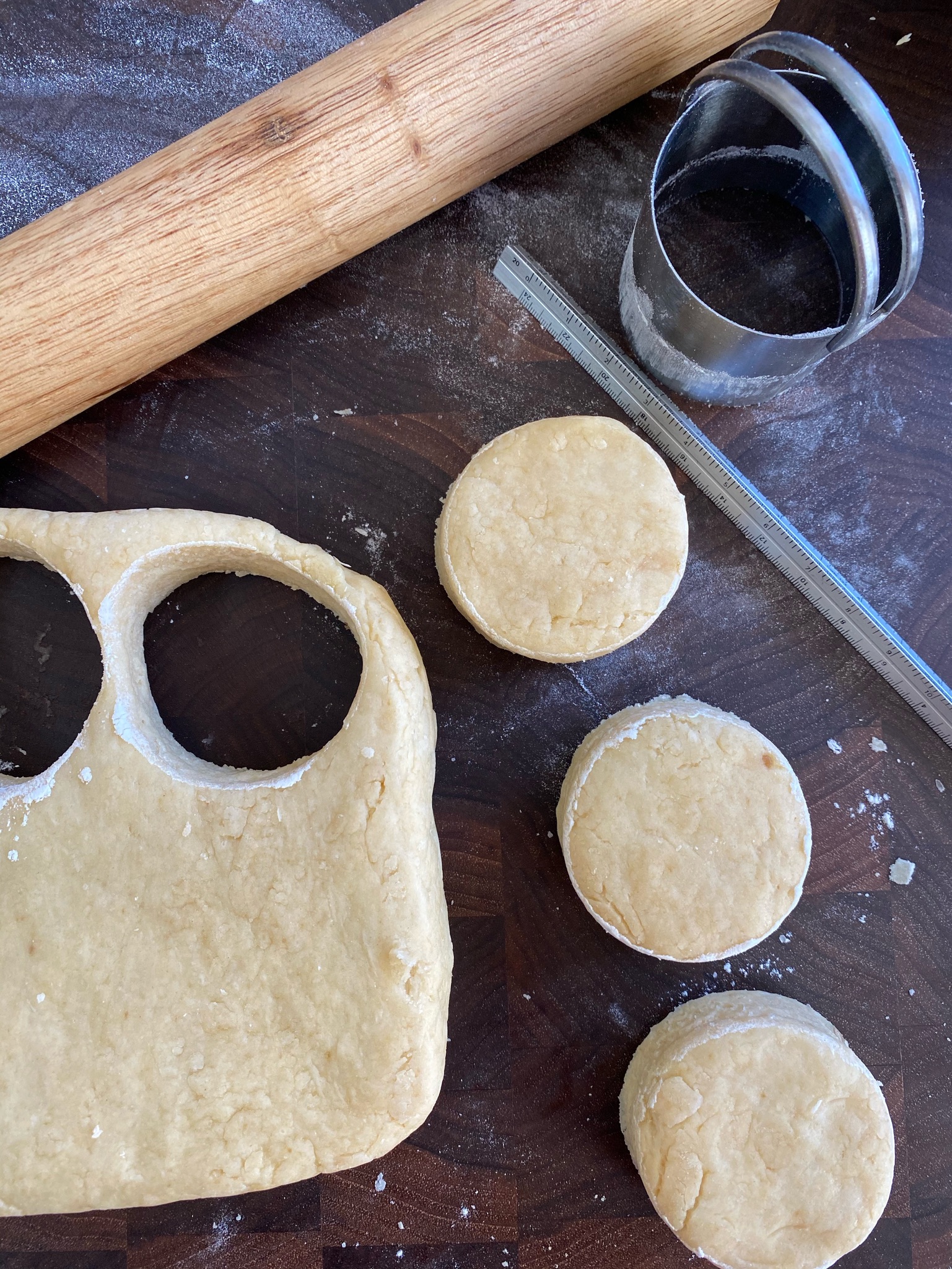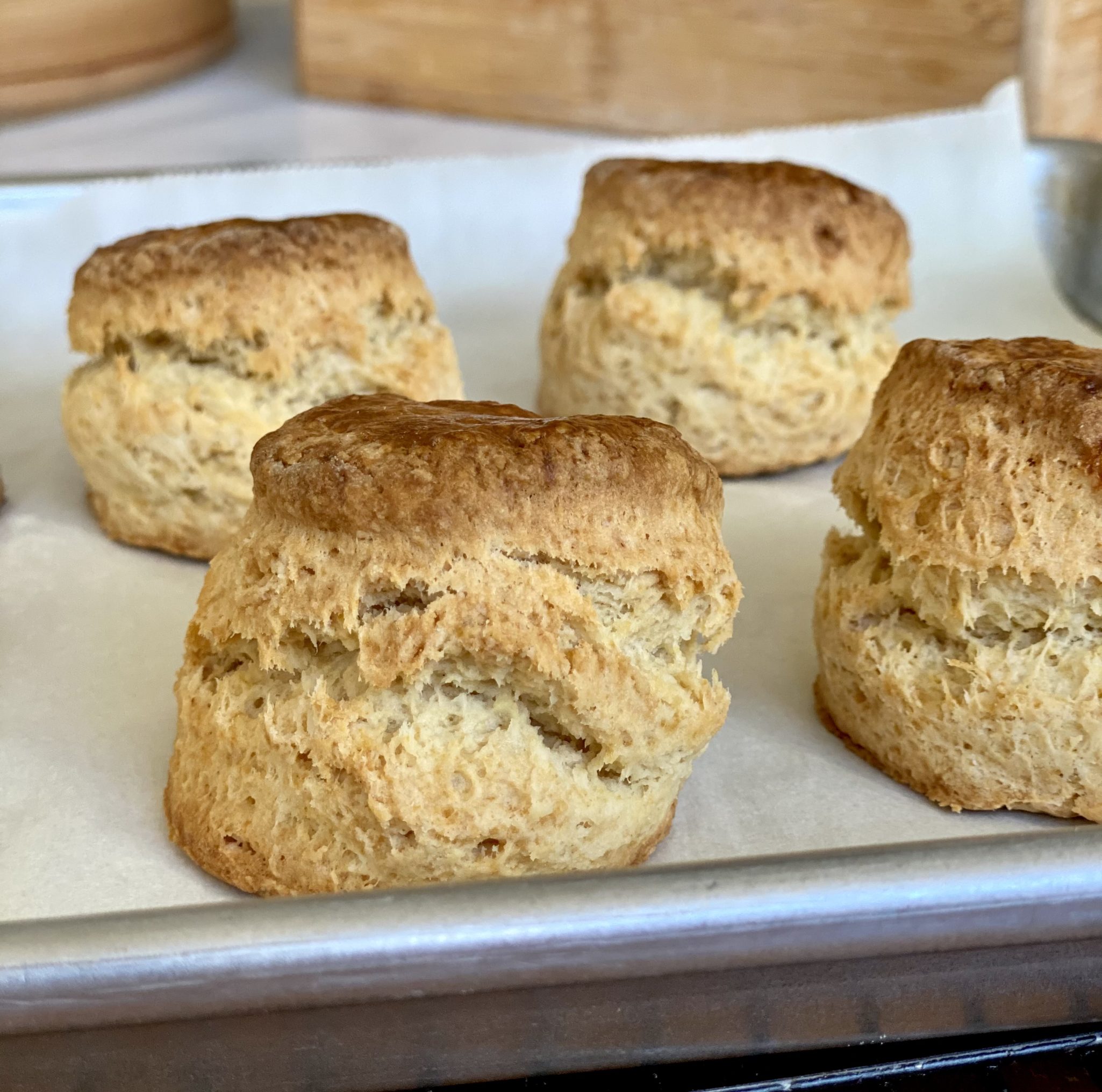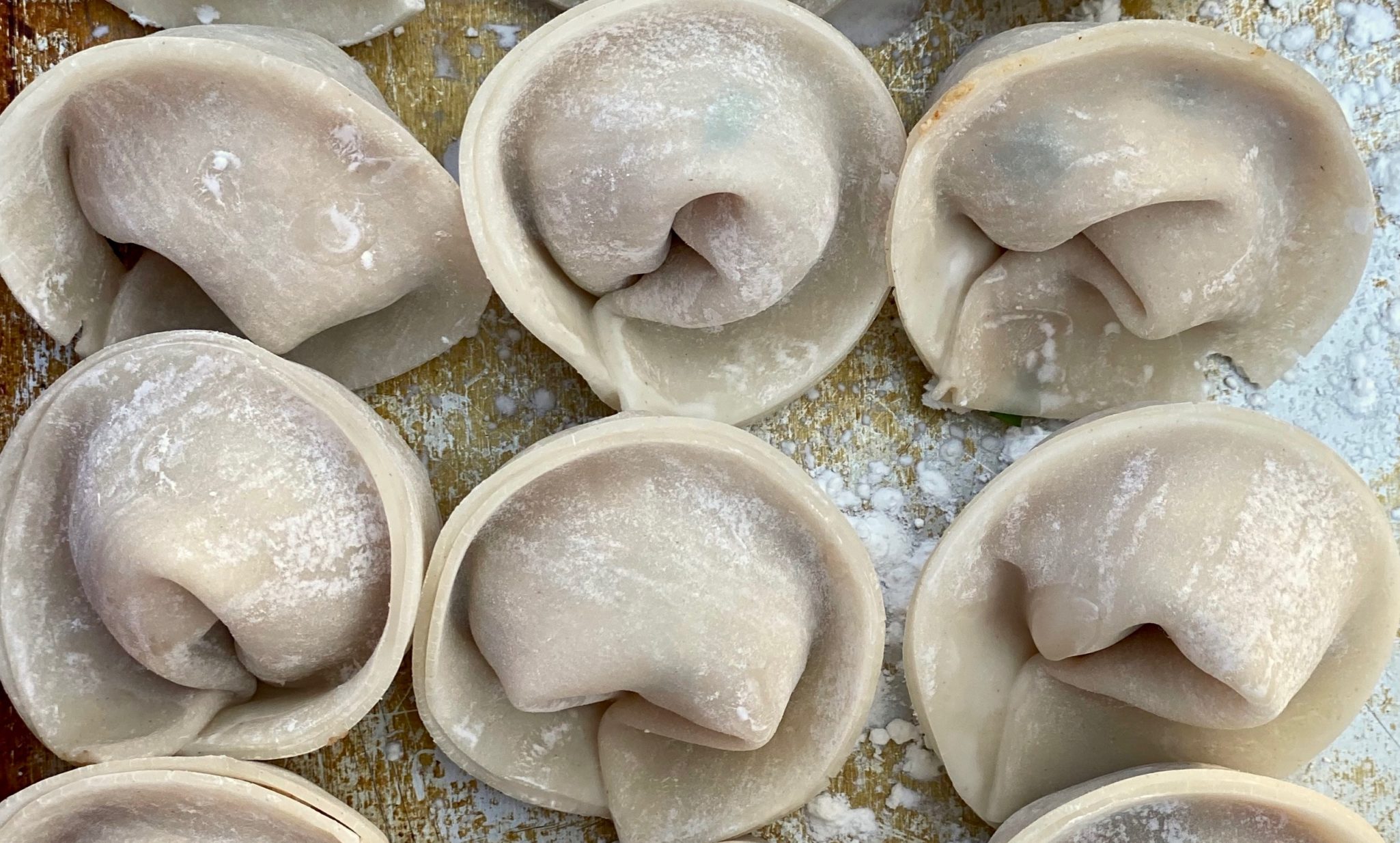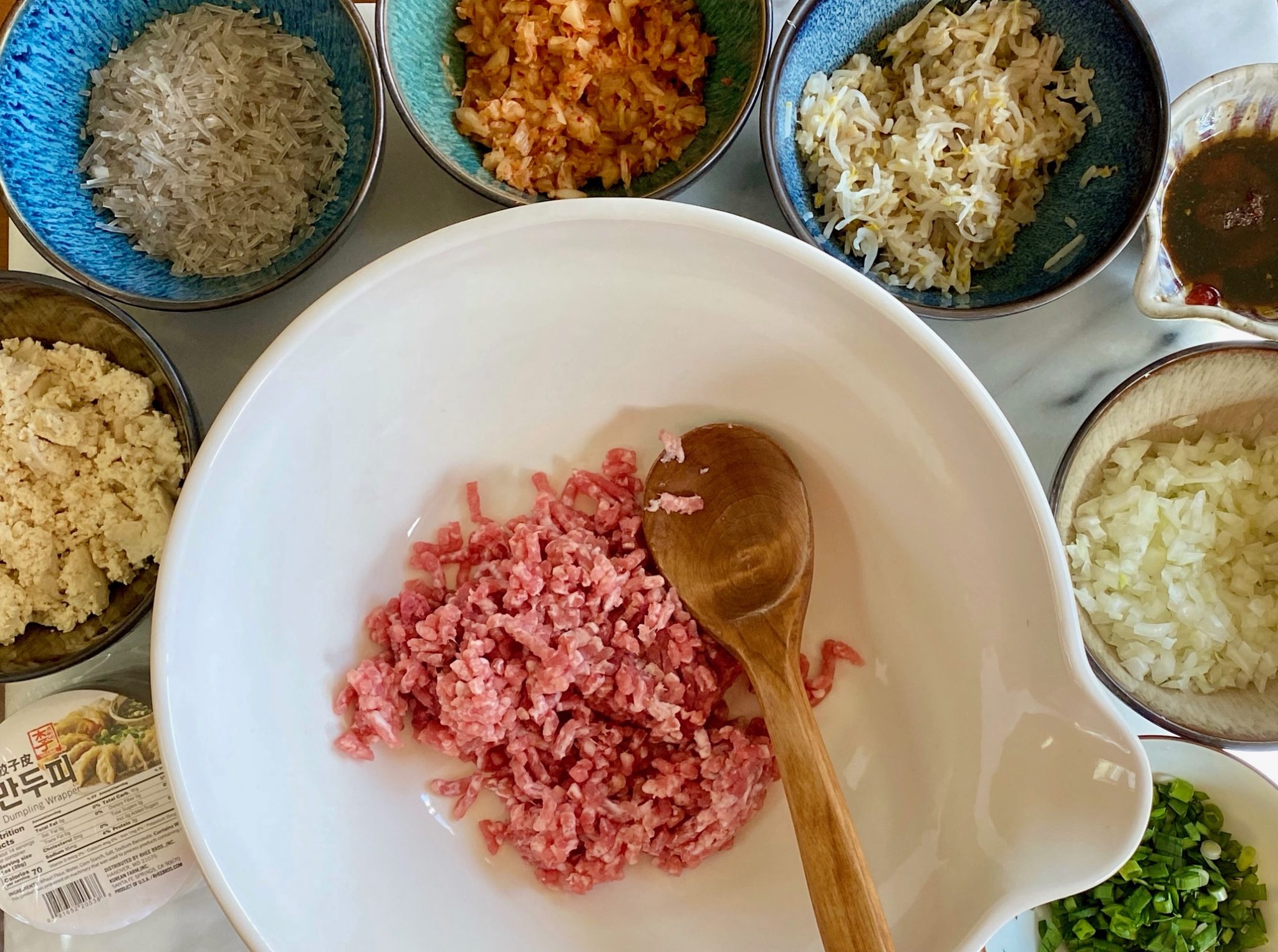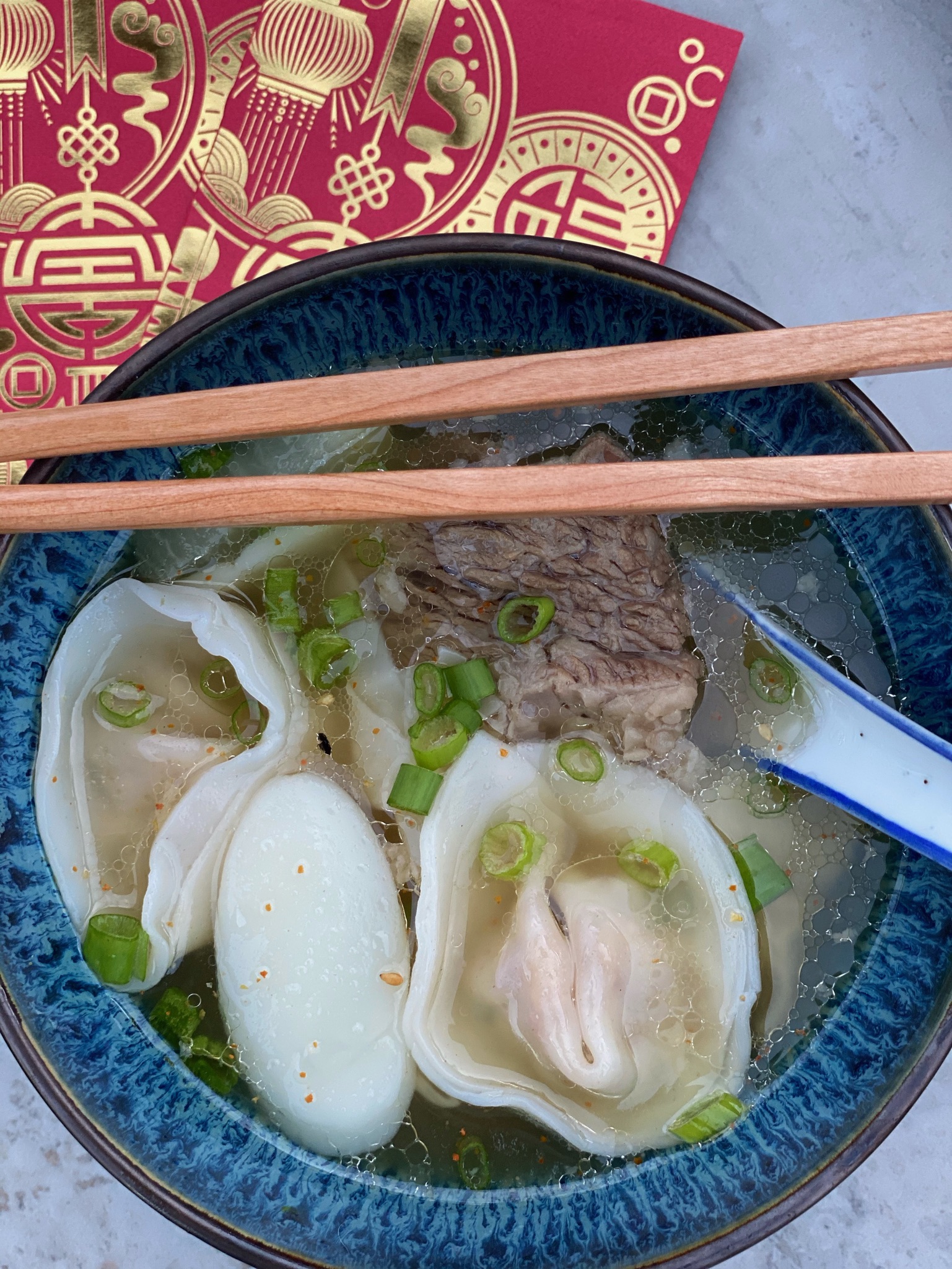
Lemon and Almond Streamliner Cake-Off the Rails Delicious
Mui is back from Minneapolis for a visit, she arrived Saturday just in time for Mother’s Day! For the first time in over a year my brother, two out of five kids, Mom, Wes, and I celebrated Mom’s 98th birthday and Mother’s Day in person. Without a doubt, the past year has been hard on everyone but so much more so on our elderly community and communities of color. My mom’s cognitive decline is apparent, I can’t help but think the isolation and inactivity contributed greatly to this.
But I am thankful that we were able to get together to celebrate another milestone with her. Luckily, she still enjoys a good meal! This was a family affair, my brother made homemade pasta and bread, while we made a delicious sauce for his pasta.
What kind of celebration would it be without dessert? We chose the Lemon and Almond Streamliner Cake from a lovely book called Vintage Cakes by Julie Richardson. The recipe from the 1960s inspired by the sleek railroad cars of the 1930s. Plus, mom loves lemons, it was a perfect choice.
The Streamliner is a single-layer cake made with almond paste and buttermilk and topped with satiny, luscious lemon custard, the star of this cake. The buttermilk heightens the lemon flavor and the almond paste adds both flavor and texture. Really delicious.
Sugar Pearls of Wisdom
We pause for baker-splaining. I am a gadget freak so if I were you I would take some of my “wish list” items with a grain of salt…do you really need a donut pan, butter curl maker, a 5×5 inch pan? Probably not. But, if you asked me what items are absolutely essential in your kitchen…I would say, a scale and a thermometer. A scale takes the guesswork out of baking. Thermometers do the same, I have a Themoworks pen and I love it. You don’t need to go that crazy, a nice instant read will work. Really, essential kitchen items…that, and a strawberry corer, lol.
Back to Cake
Make the custard first so it is chilling in the fridge while you make the cake. Use your instant thermometer (see, told you). Egg-based puddings and custards can curdle if cooked beyond 185 degrees. We wanted the custard thick enough to hold a design on the cake so we shot for a smidge over 180 degrees. Once your custard gets to between 175-180, take it off the heat but do not strain immediately, give it a couple of minutes. The heat from the pot should push it to ~180. If you do not have a thermometer, test custard by coating the back of a spoon. Draw a line thru the custard, the line should stay, that’s when it is thick enough. But really, if it is a bit runny, it is still going to be delicious
The batter for the cake does fill a 9×2 inch round to an alarmingly high level…but it has not overflowed the times I have made this cake. For peace of mind, if you have a taller 9-inch pan, use it.
Break up the almond paste before adding it to other ingredients. You don’t want lumps of almond paste in your finished cake.
Finishing touches
Once your cake has cooled and the custard has finished chilling. Place your cake on a turntable (makes it infinitely easier to swirl). Frost the cake with a thin layer of custard on the sides and top. For the top, if you are good with a piping bag and have a big tip, pipe a spiral. Or method 2, spread the remaining custard on top and create a smooth even layer. With an offset spatula, start from the center of your cake holding the offset at about a 45-degree angle, apply light pressure and spin your turntable and move the spatula towards the outer edge. Ta-da, a beautiful spiral top. An easy badass cake design. Enjoy!
Lemon and Almond Streamliner Cake
Equipment
- 9" inch round cake pan
Ingredients
Custard
- Zest of 2 lemons
- 3/4 cup whole milk
- 1/2 cup sugar
- 4 egg yolks
- 1/2 teaspoon salt
- 2 tablespoons cornstarch
- 1/2 cup lemon juice about 3 lemons
- 1/2 cup unsalted butter cut into small cubes
Cake
- 1 1/4 cups sifted cake flour
- 11/2 tsp baking powder
- 1/2 tsp salt
- 3/4 cup almond paste, room temperature 6 oz. Break into pieces to make it easier to blend.
- 10 tbsp unsalted butter, room temperature 5 oz.
- 2/3 cup sugar
- 3 tbsp canola oil
- 2 tsp vanilla extract
- 3 eggs at room temperature
- 2/3 cup buttermilk at room temperature
Instructions
- For the custard:
- Combine the zest, milk, and 1/4 cup sugar in a medium saucepan and heat over medium-low heat until just hot.
- In a medium sized bowl, whisk together the egg yolks, the remaining 1/4 cup sugar, and the salt until well-combined, then whisk in the cornstarch and lemon juice.
- Slowly whisk about 1/3 of the hot mixture into the yolk mixture. Pour the yolk mixture back into the saucepan of hot milk, whisking steadily, until the custard begins to thicken and bubble for one minute. Note: Helpful to have an instant thermometer. Egg-based puddings and custards can curdle if cooked beyond 185 degrees. We wanted the custard thick enough to hold a design on the cake so we shot for a smidge over 180 degrees. Once your custard gets to between 175-180, take it off the heat but do not strain immediately, give it a couple of minutes. The heat from the pot should push it to 180.
- Strain the custard through a fine mesh into a clean bowl, and whisk in the butter until melted. Place a piece of plastic wrap directly on the surface of the custard and refrigerate for two hours.
- For the cake:
- Center an oven rack, and preheat the oven to 350 degrees. Grease a 9 inch round cake pan and line the bottom of the pan with parchment paper.
- Sift together the flour, baking powder, and salt in a bowl, then whisk to combine well.
- Using a stand mixer with a paddle attachment, combine the almond paste, butter, sugar, canola oil, and vanilla on low speed until blended. Increase the speed to high, and cream until very light and fluffy, about 5 to 7 minutes. Stop the mixer frequently to scrape the paddle and sides of the bowl.
- Blend in the eggs one at a time, adding the next one as soon as the previous one has disappeared into the batter. With the mixer on low speed, add the flour in three parts, alternating with the buttermilk in two parts, begin and end with flour. After each addition, mix until just barely blended, and scrape the sides of the bowl.
- Pour the batter into the prepared pan and spread it evenly. Rap the pan firmly on the counter to release any air bubbles. Place the pan in the center of the oven and bake until the cake is a deep golden color and a wooden pick comes out barely clean, about 42 to 45 minutes. The batter will fill the pan but shouldn't overflow while baking. BUT, just in case, you might want to put foil underneath the pan.
- Cool the cake in pan on a wire rack for 30 minutes. After 30 minutes, flip the cake out onto the wire rack, remove the parchment paper, and flip the cake back to right side up. Cool to room temperature.
- Place cake on a serving plate and frost the sides of the cake lightly with the lemon custard. Frost the top of the cake with remaining custard, then let the cake set in the refrigerator for about 30 minutes. Any leftover cake keeps in an airtight container in the refrigerator for up to three days.
